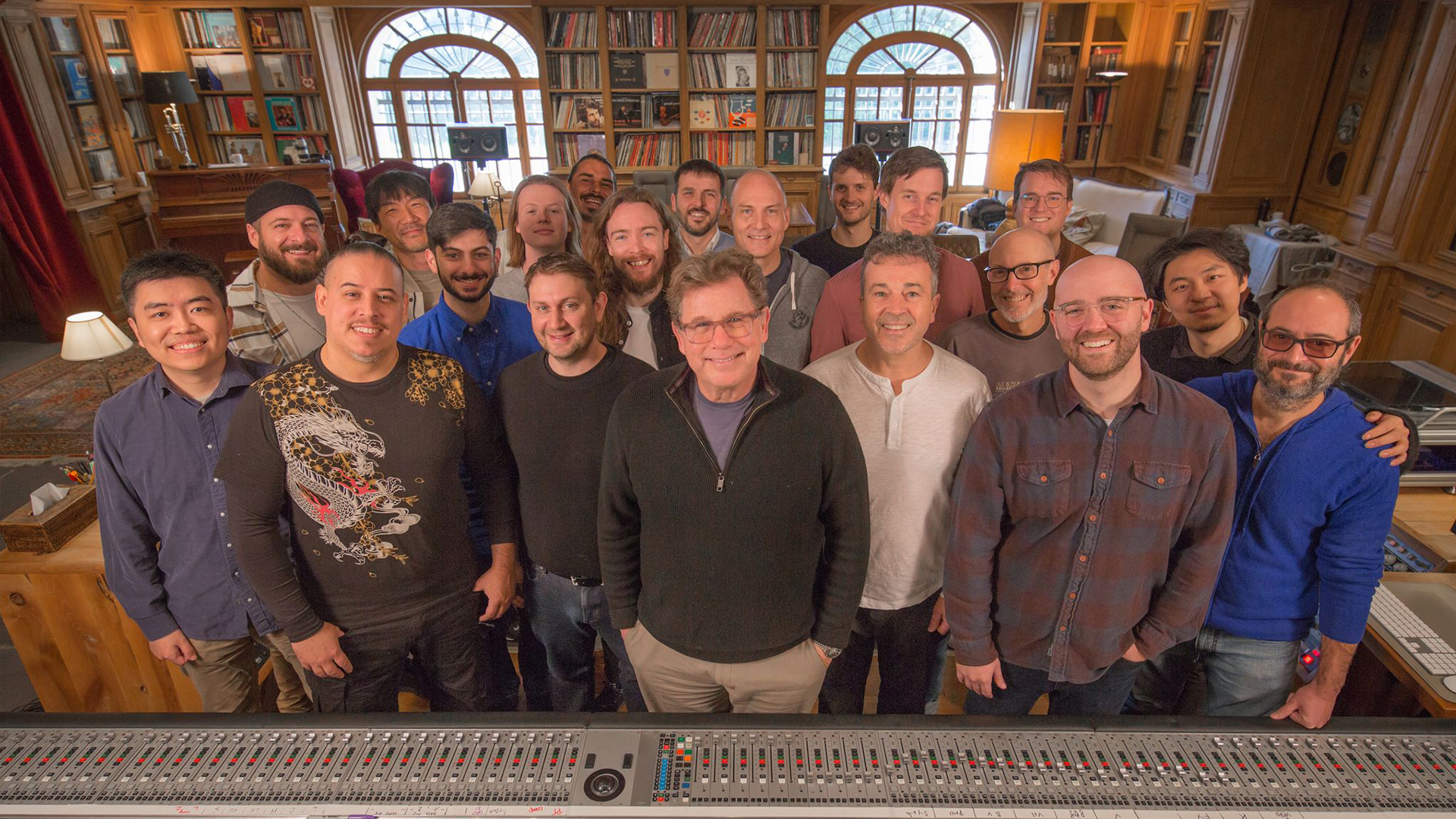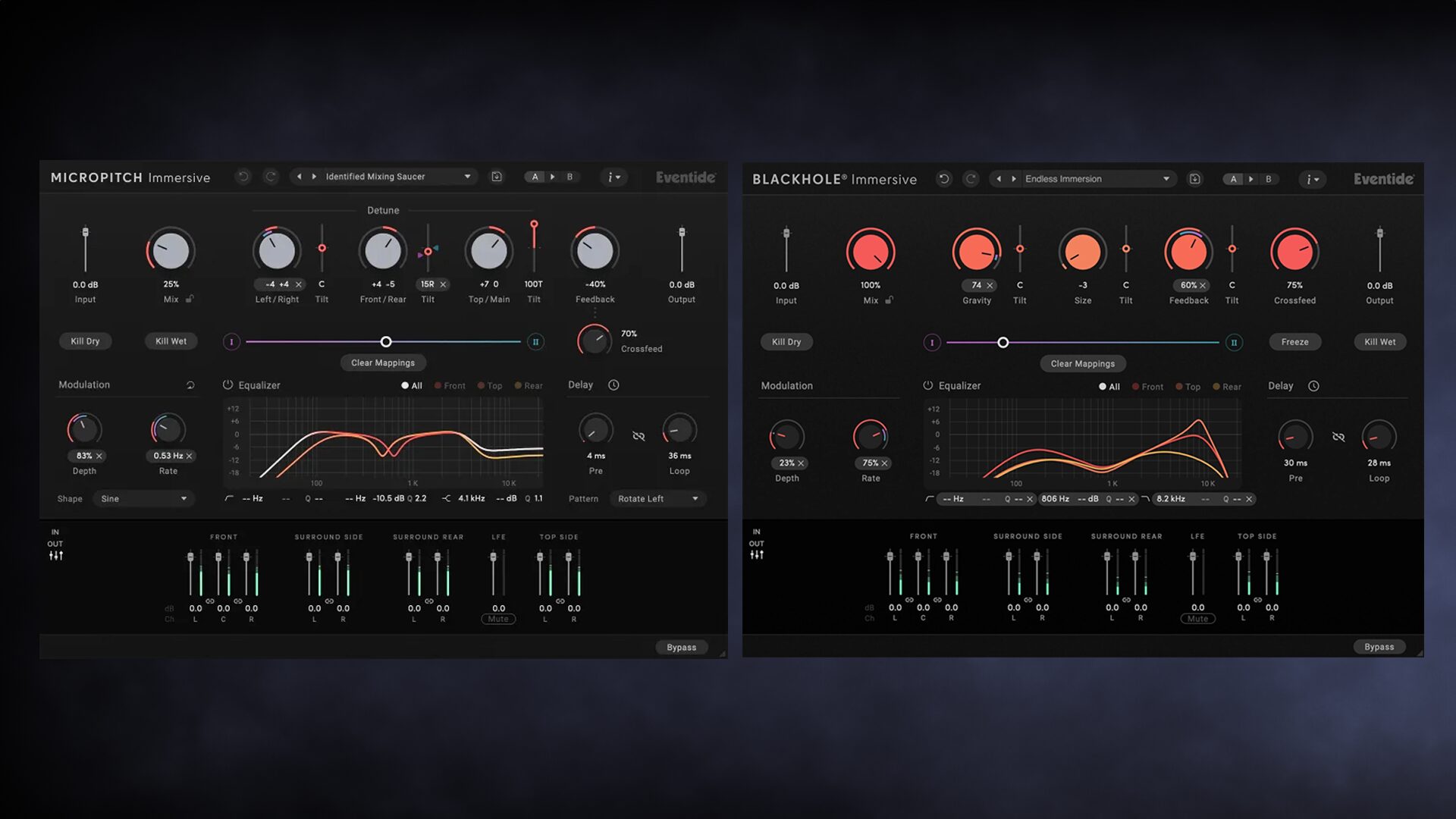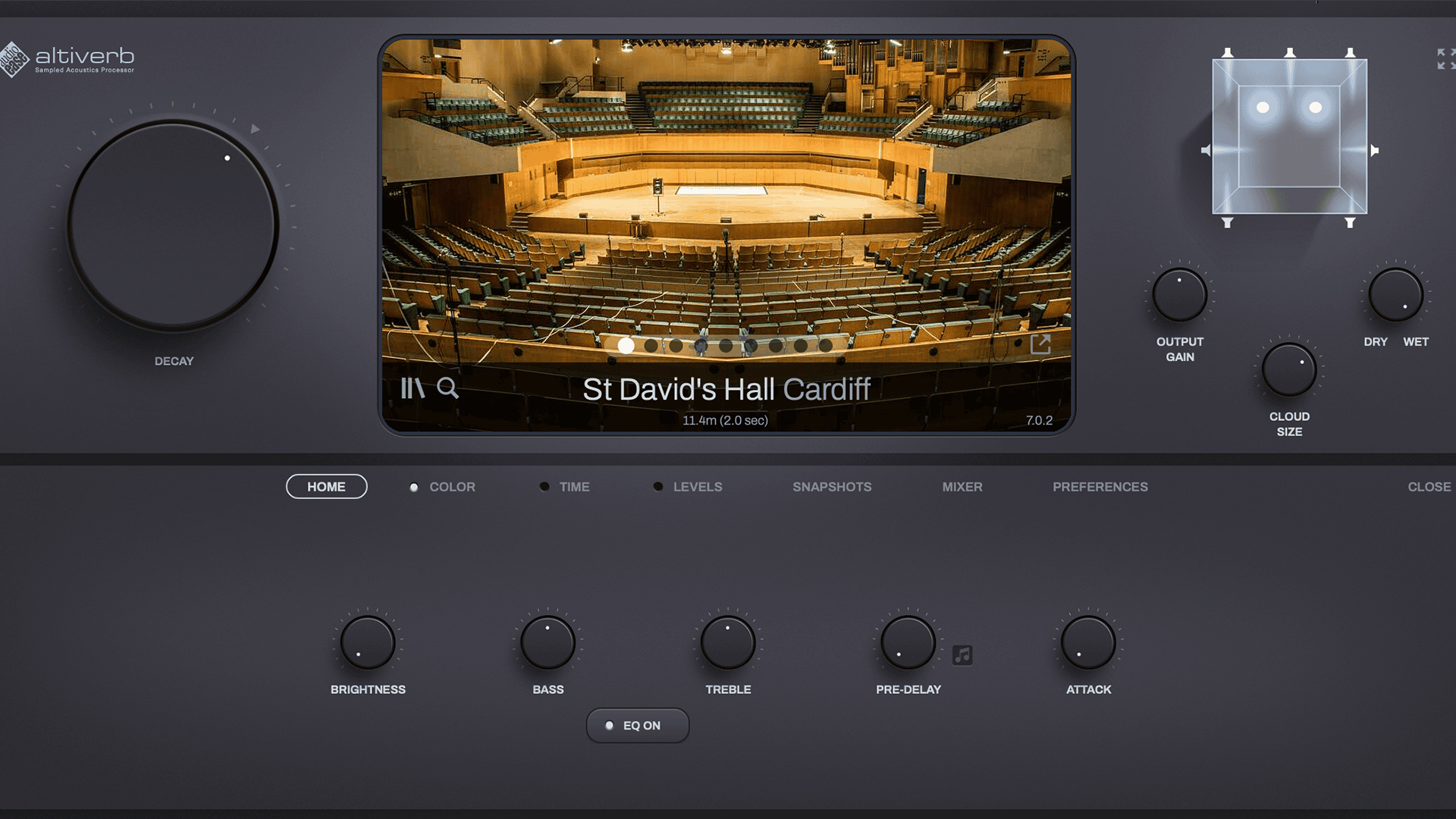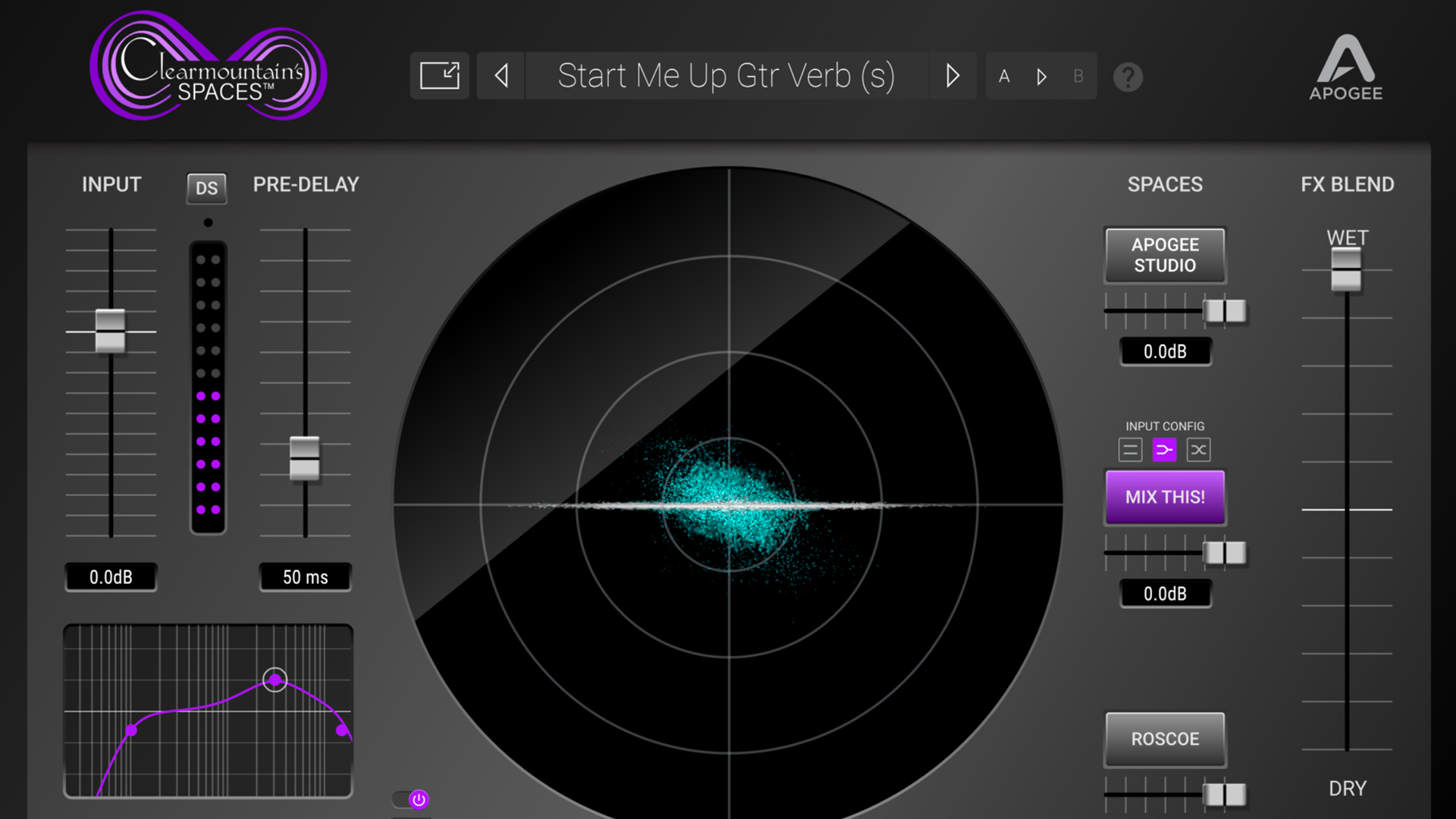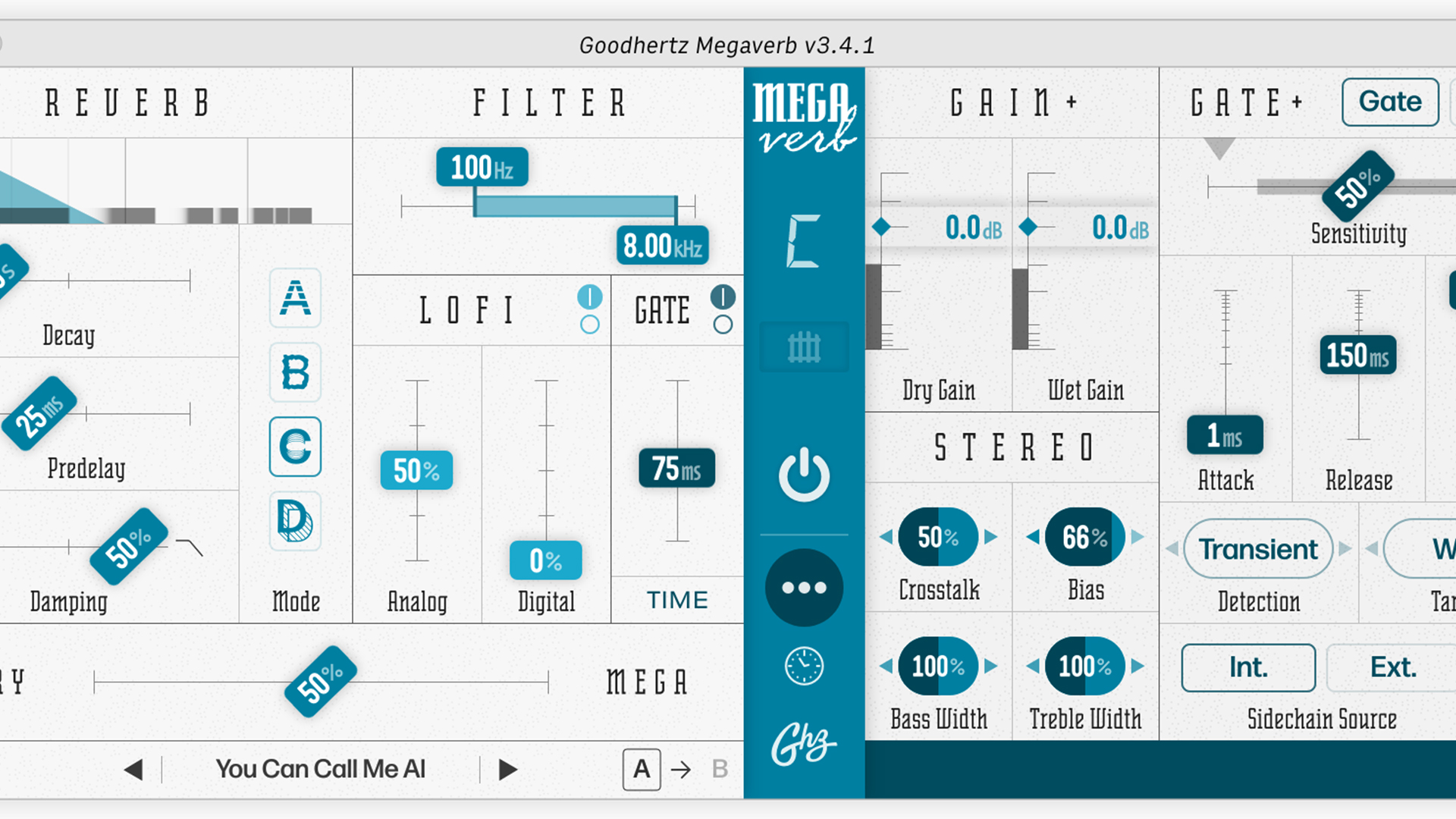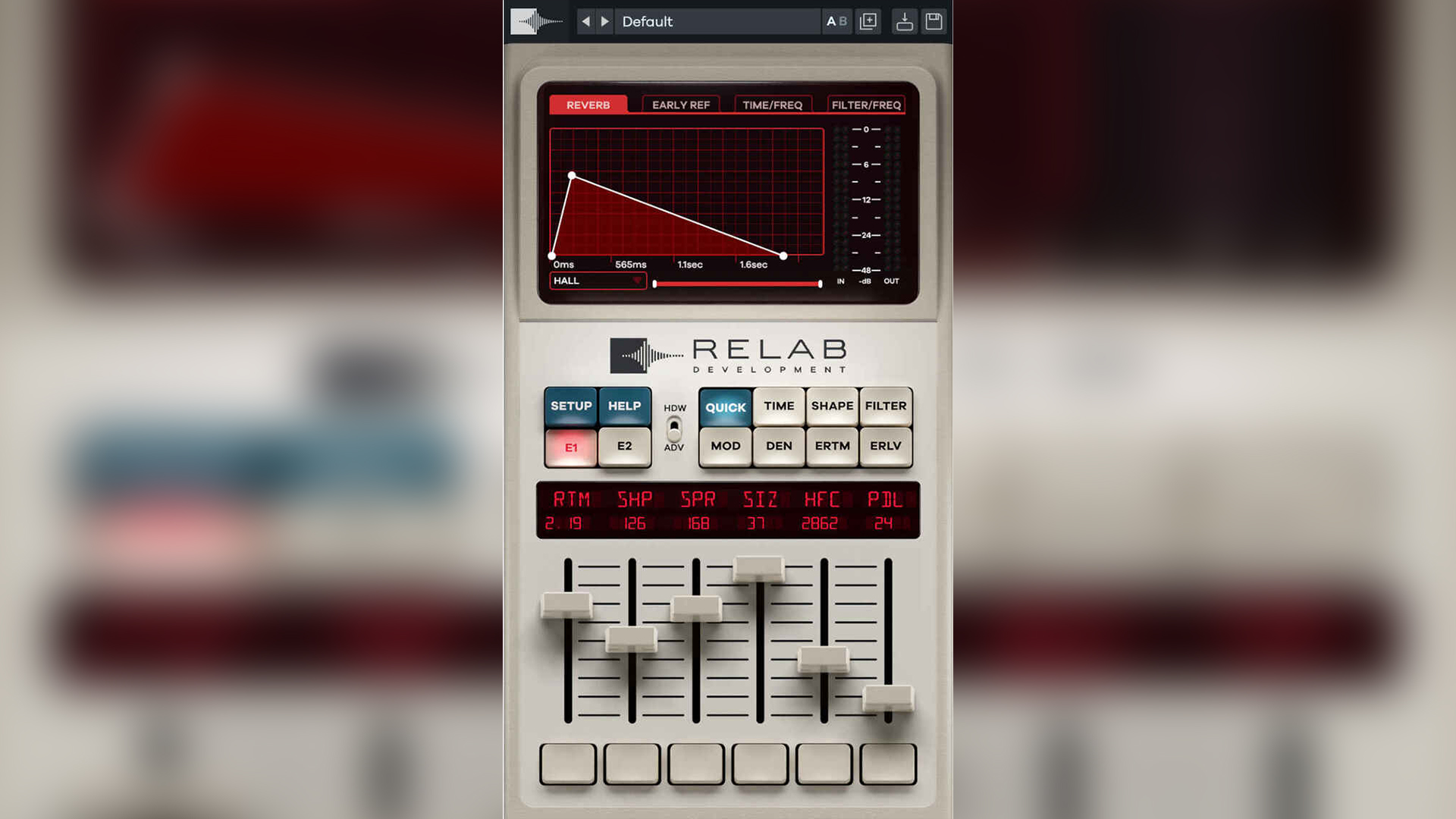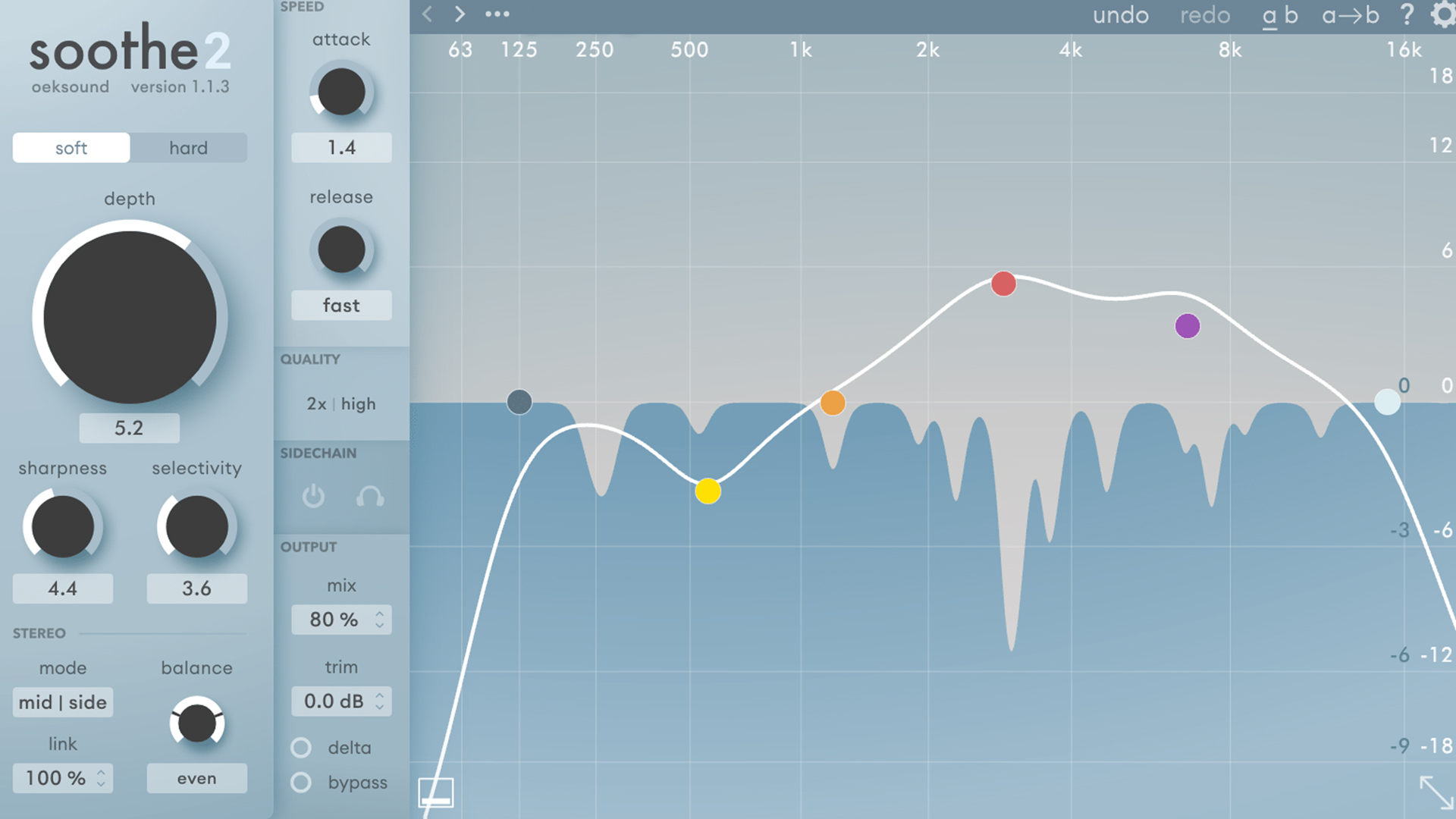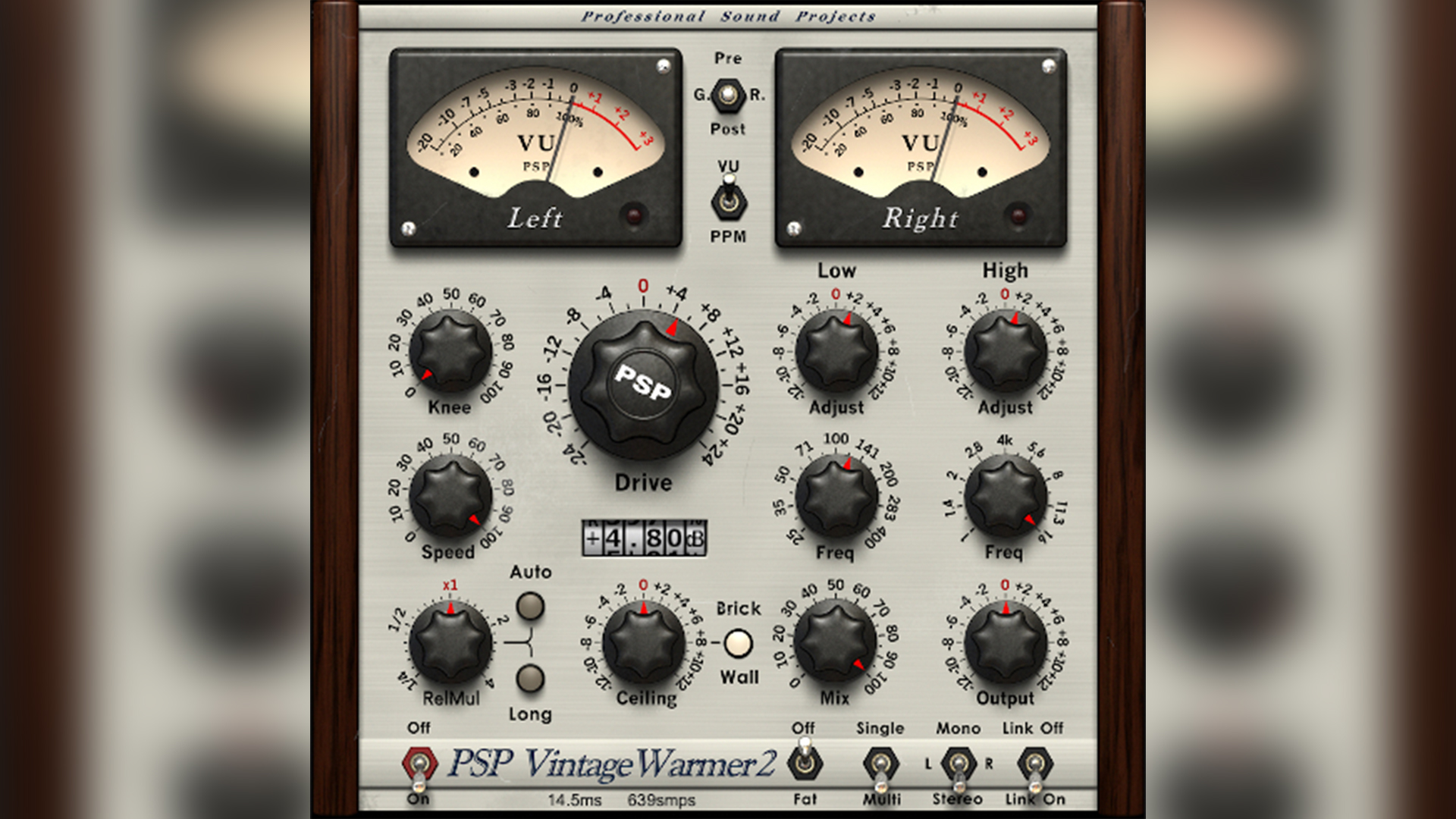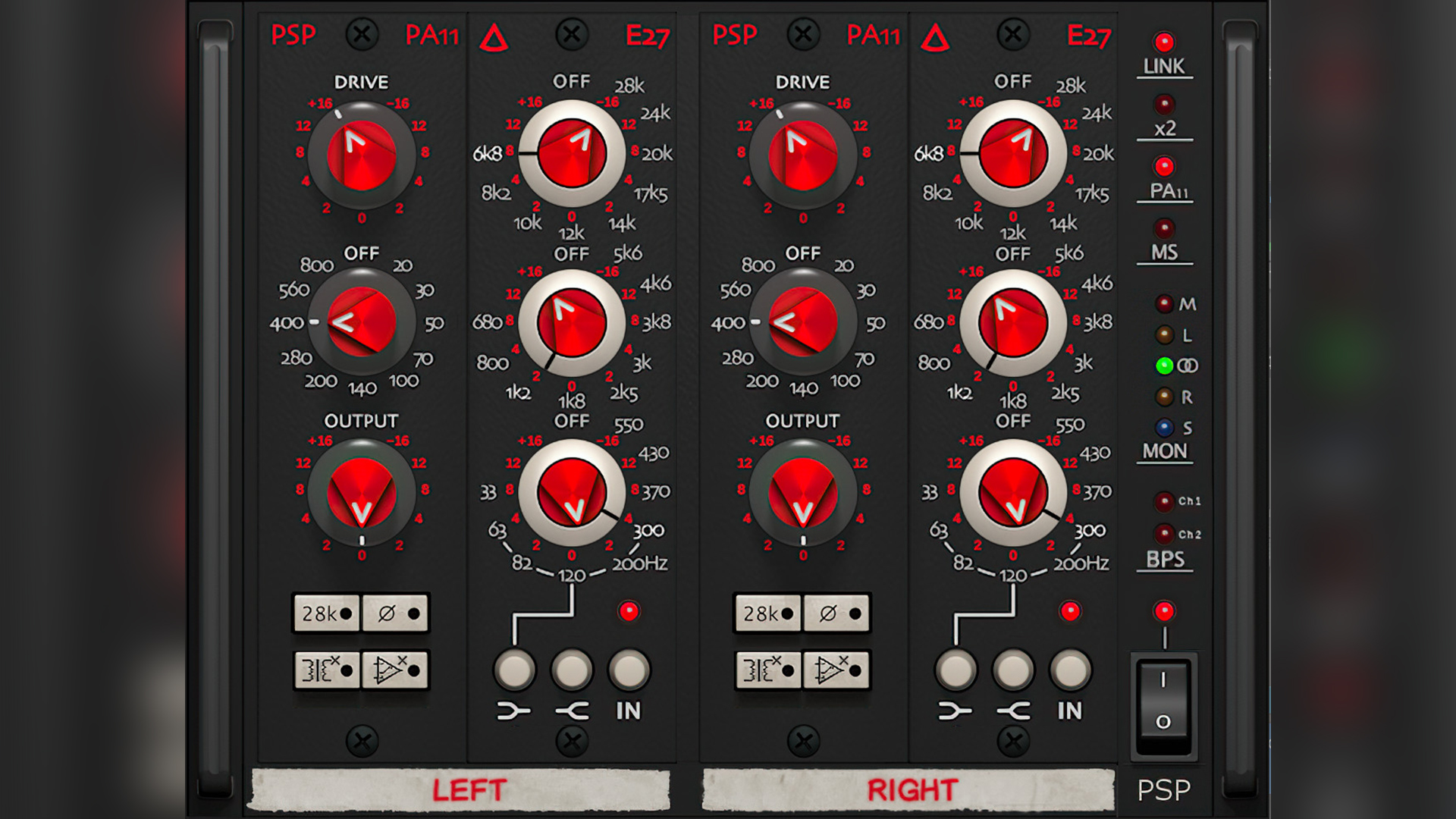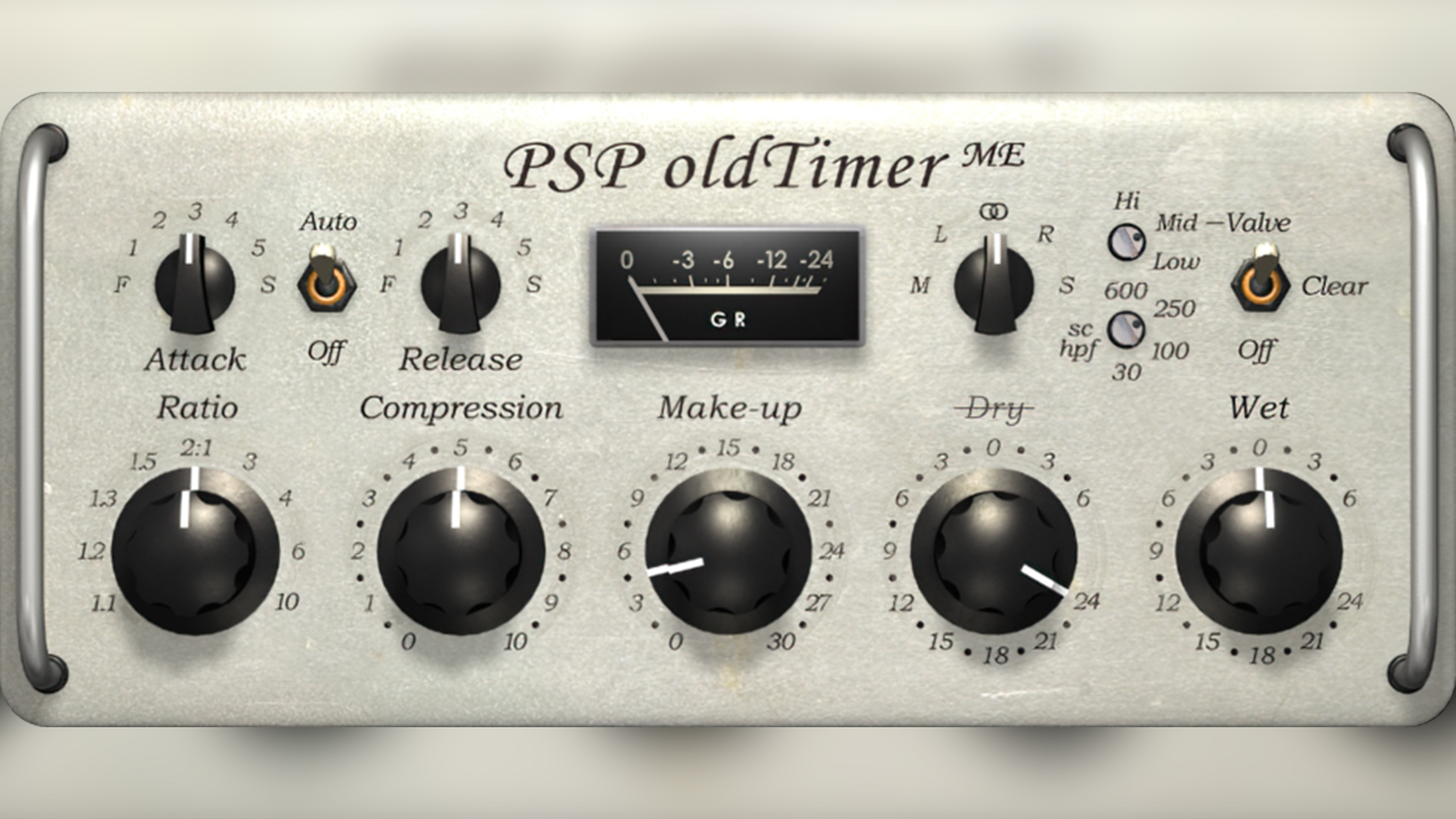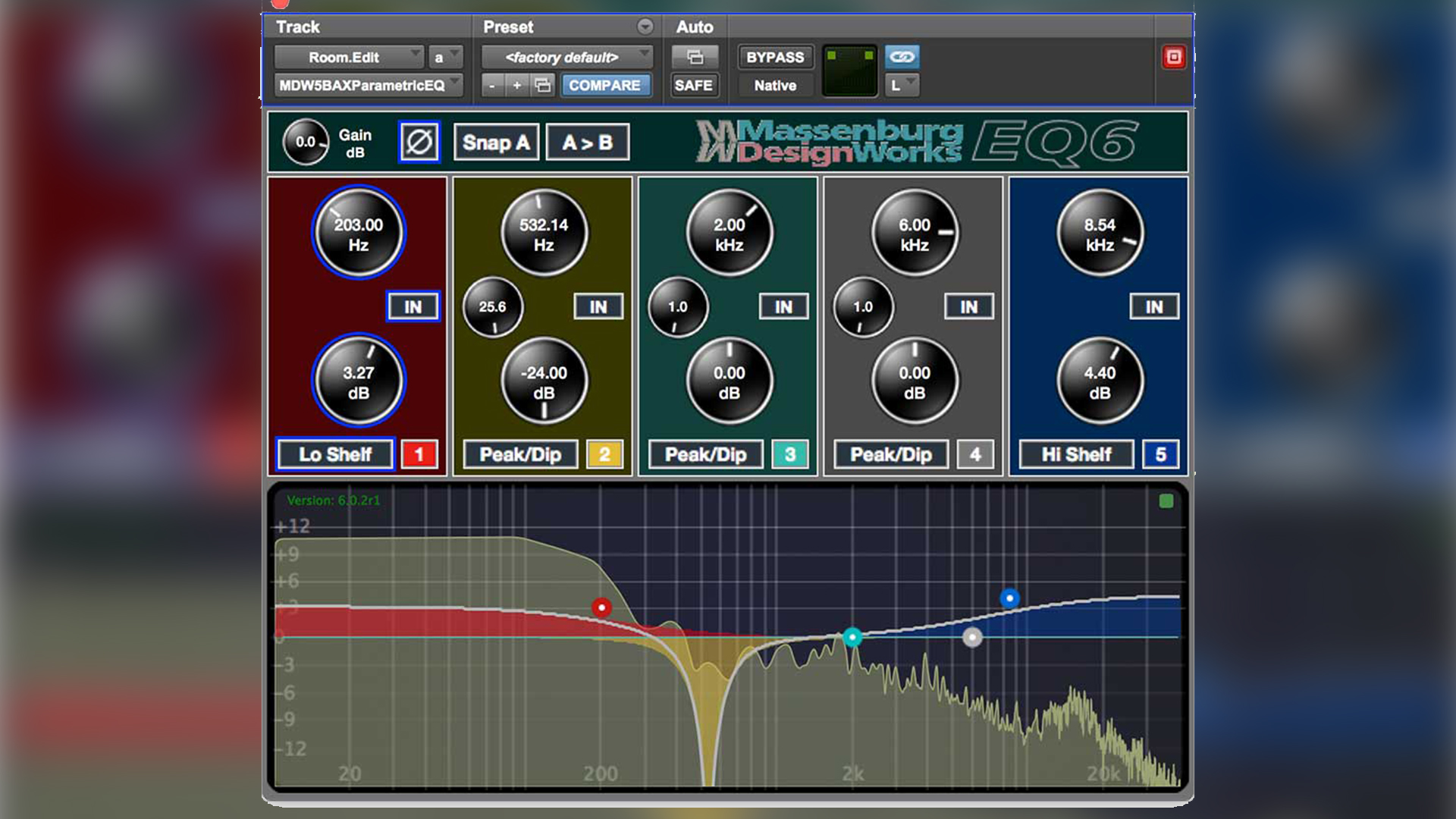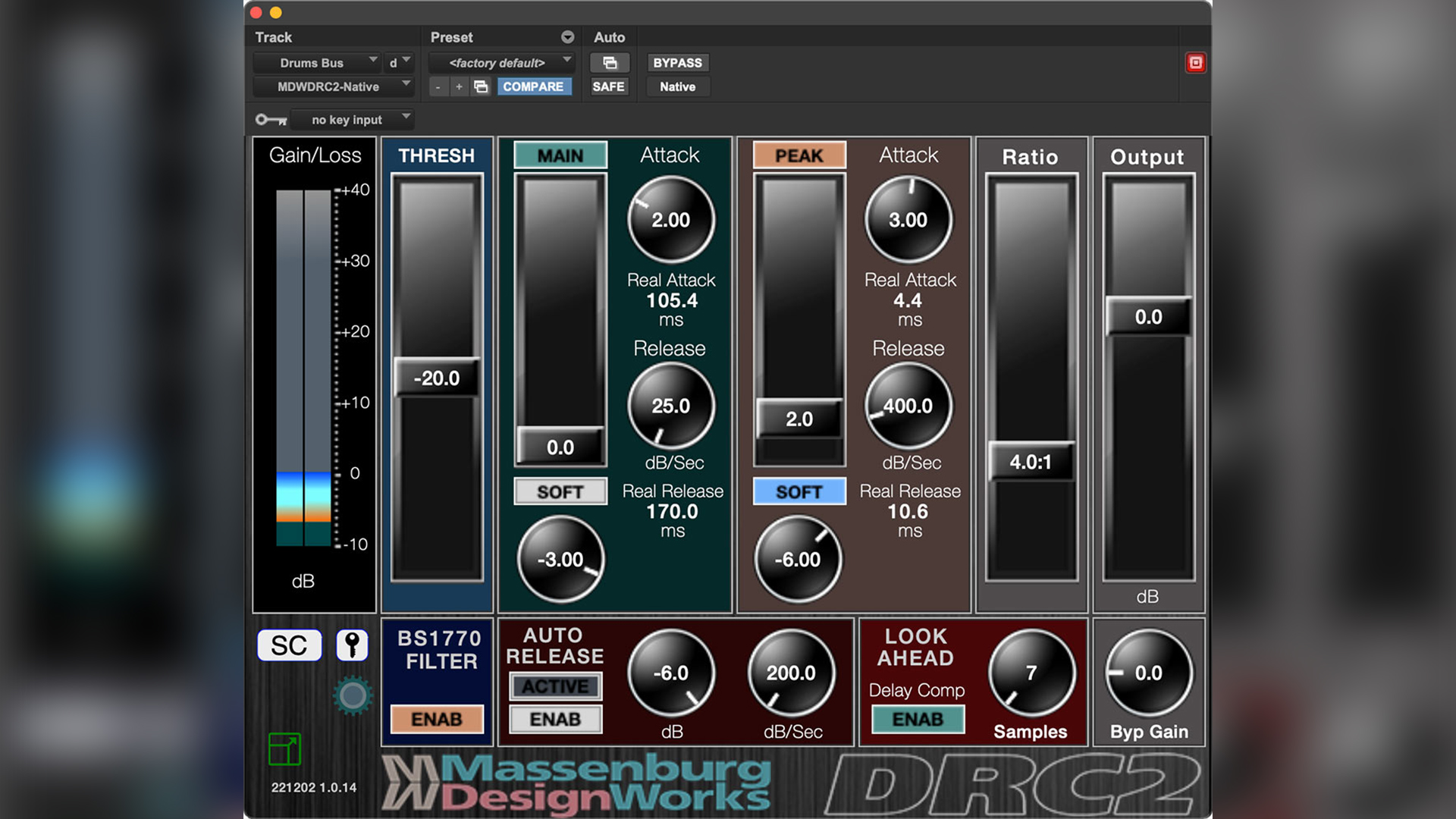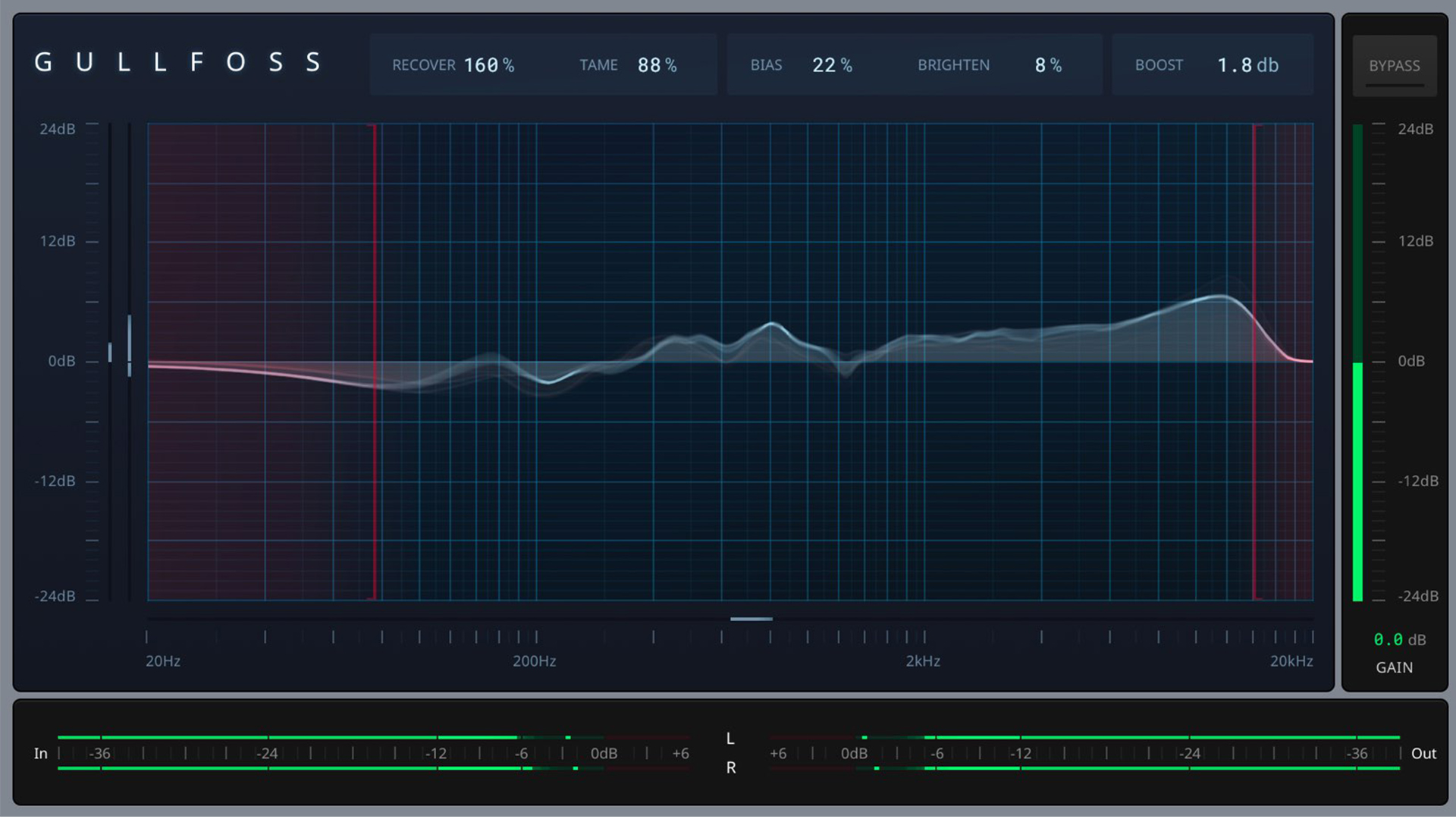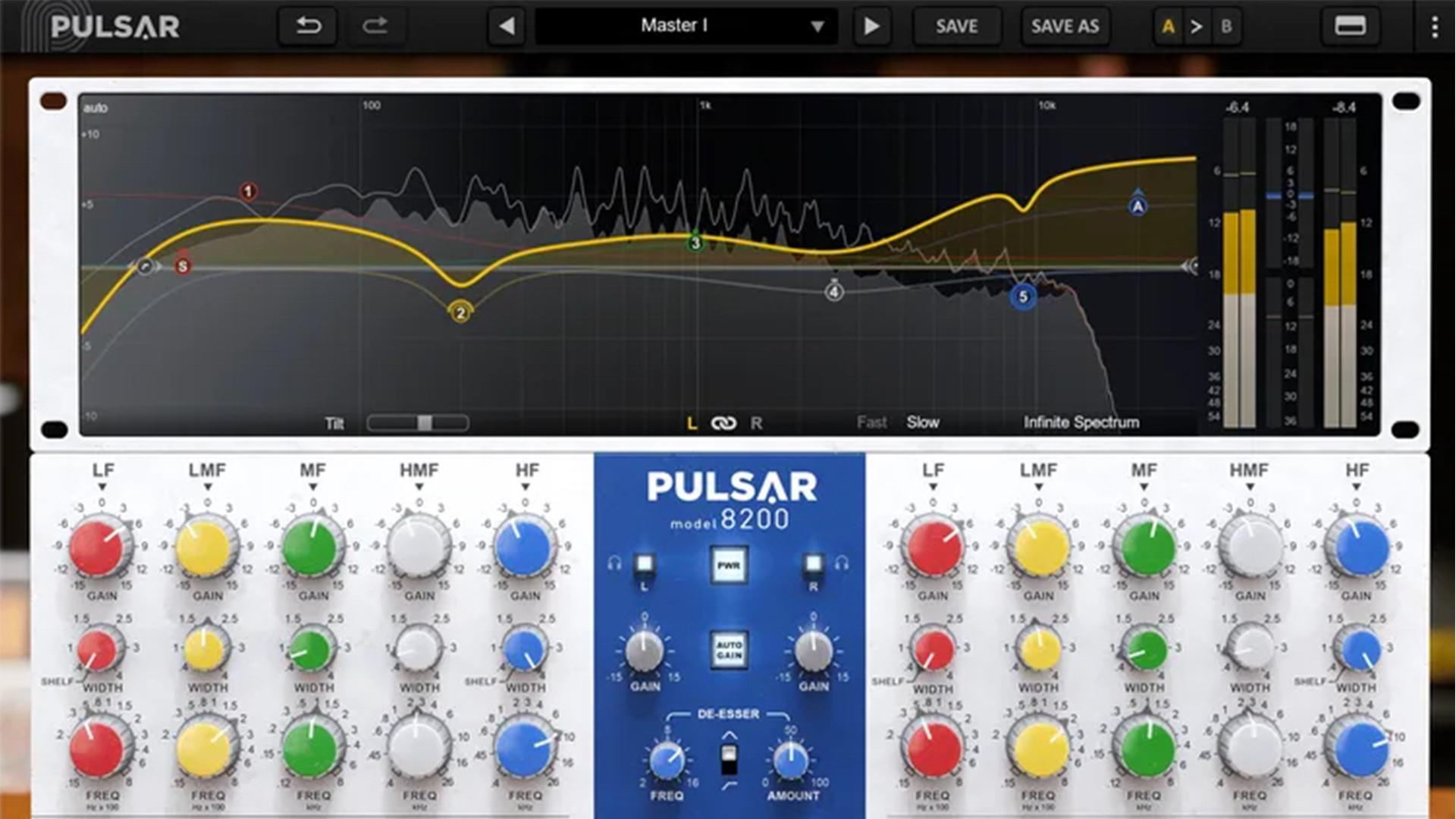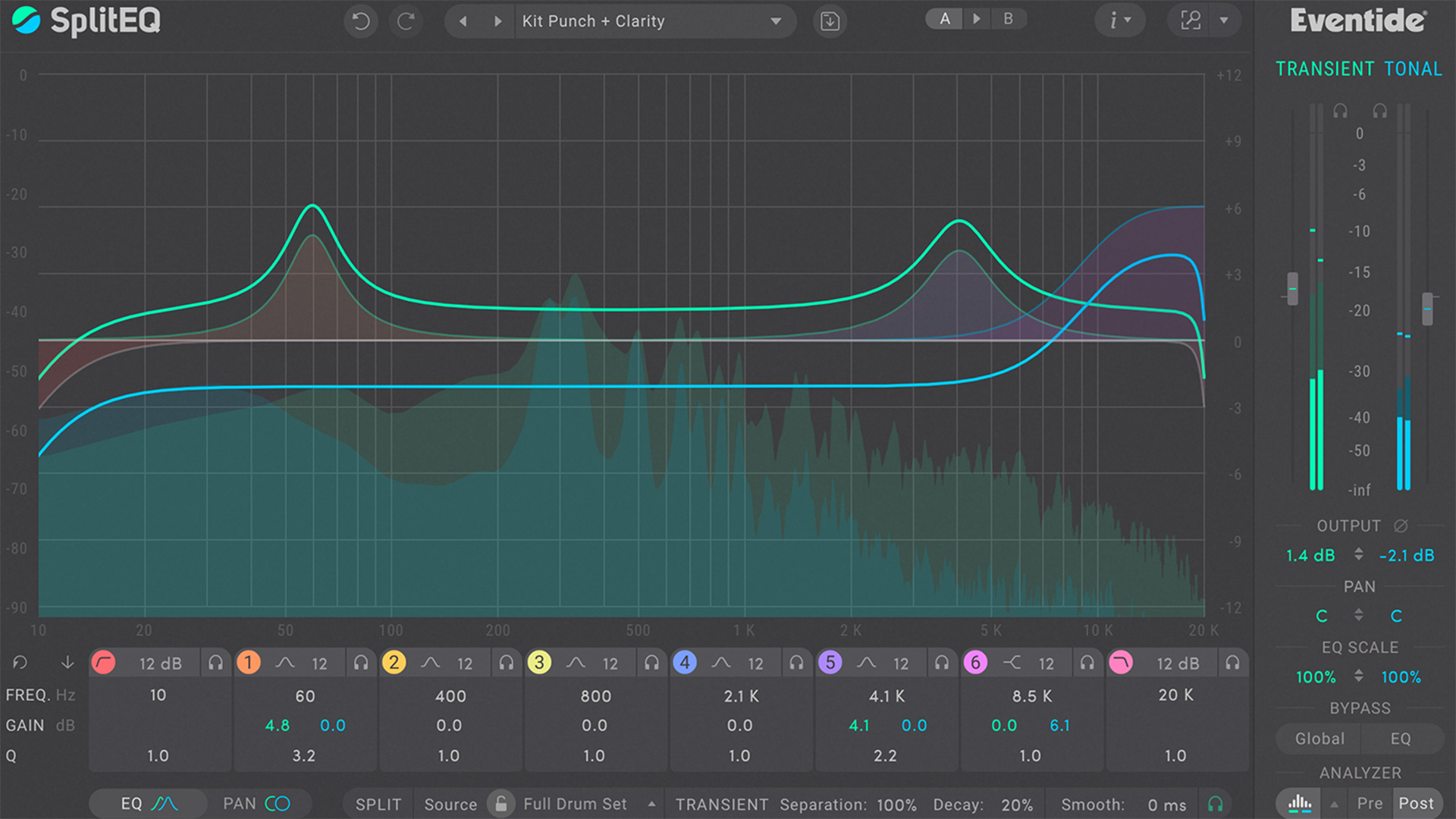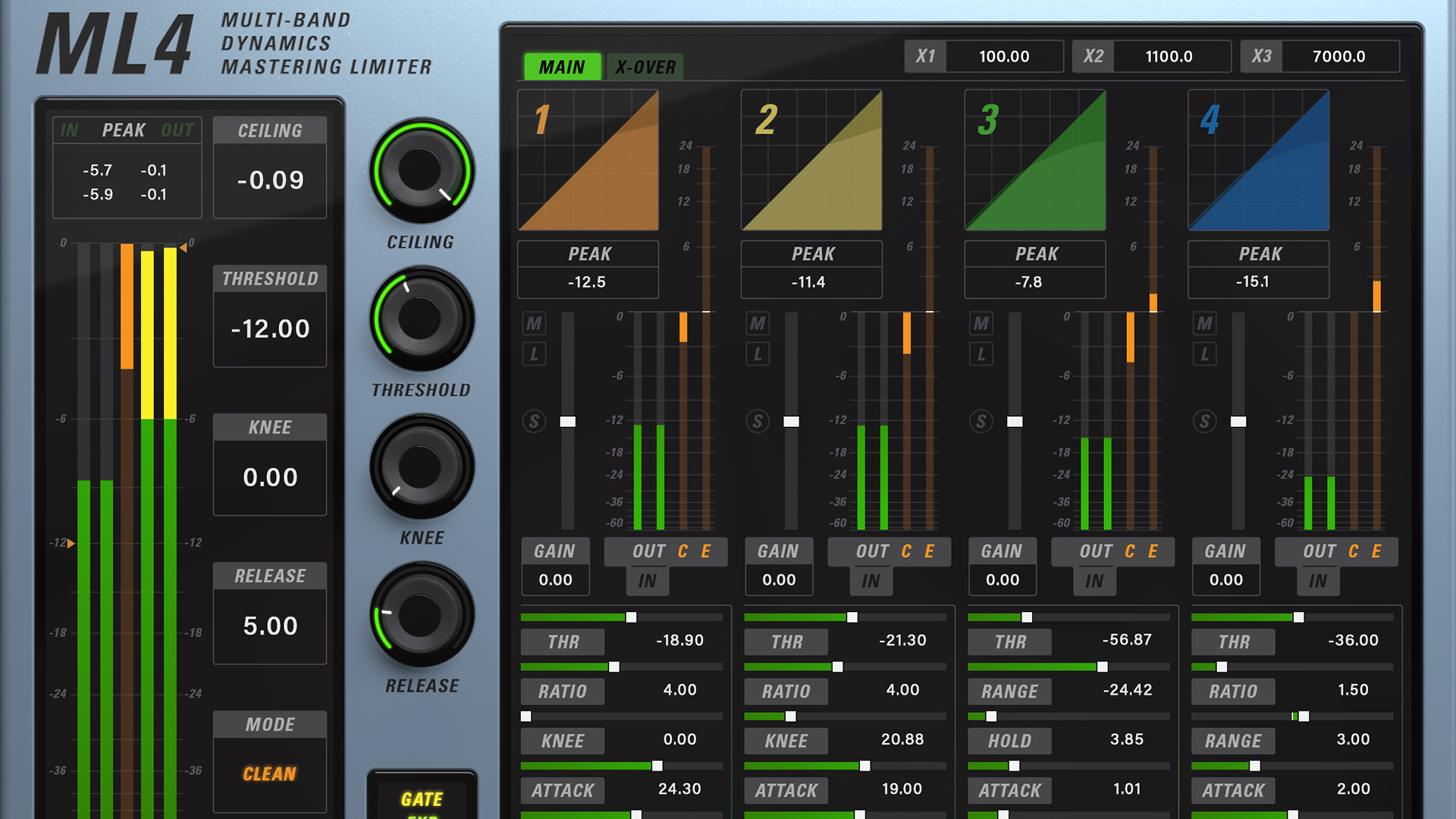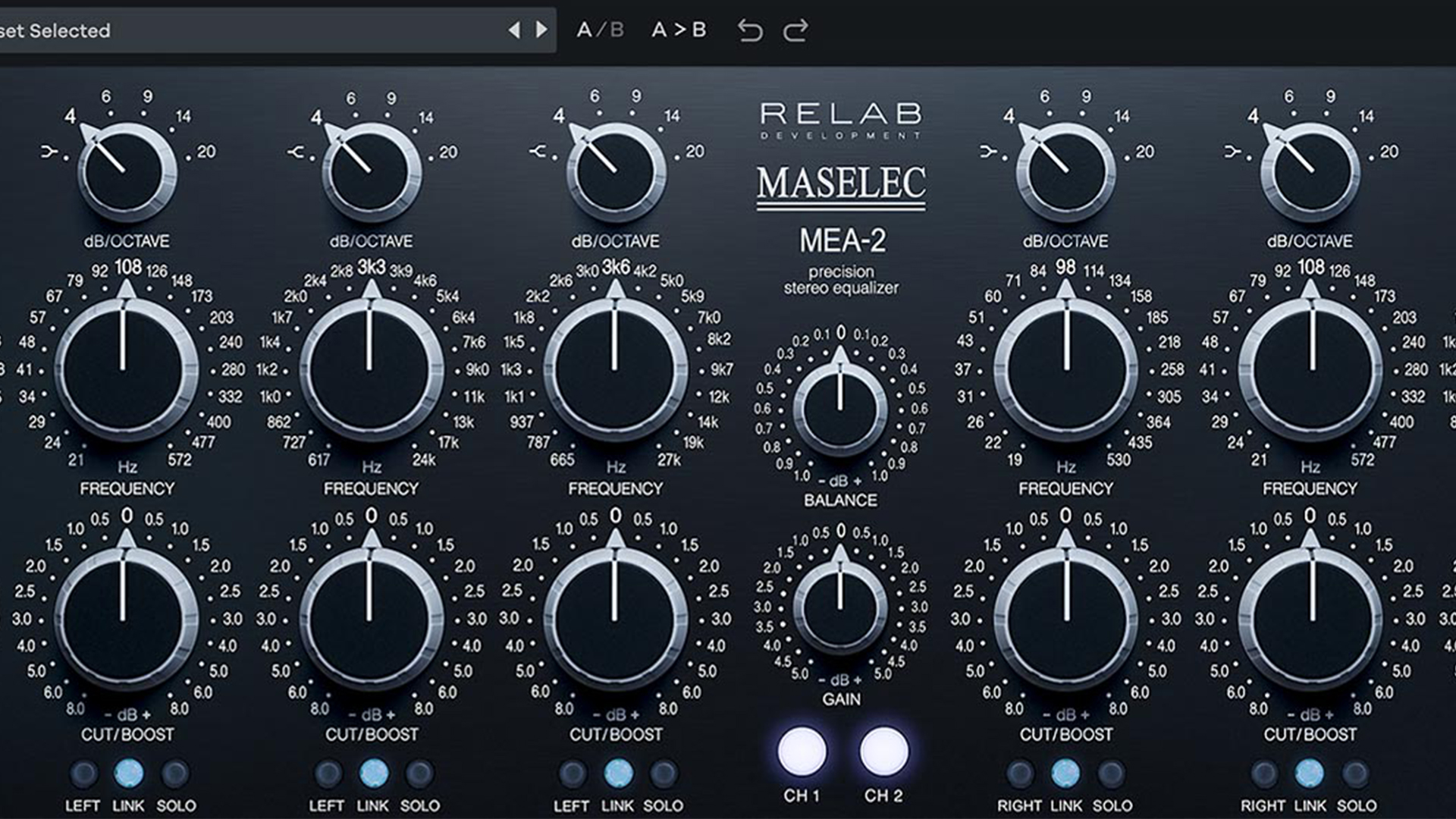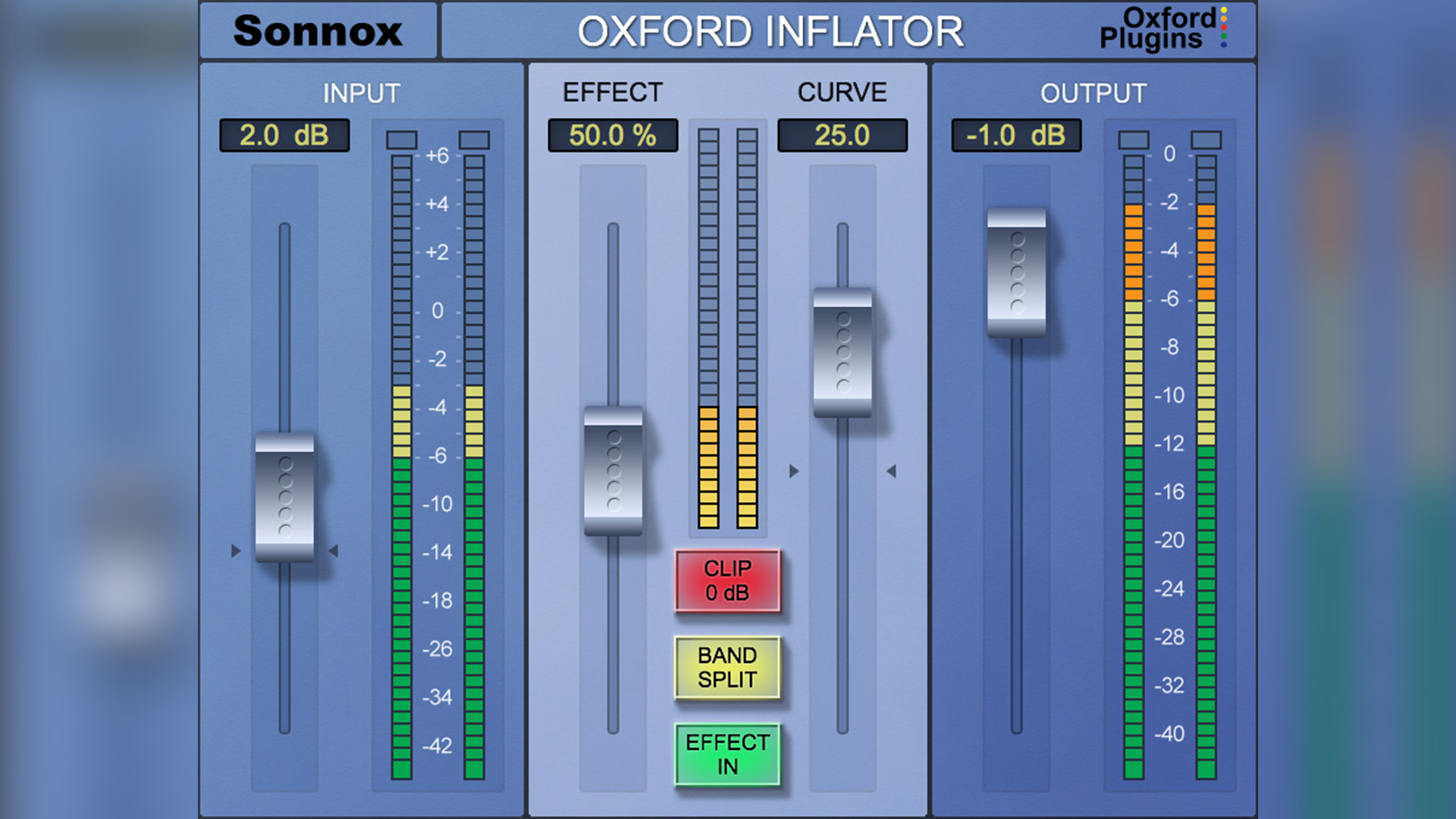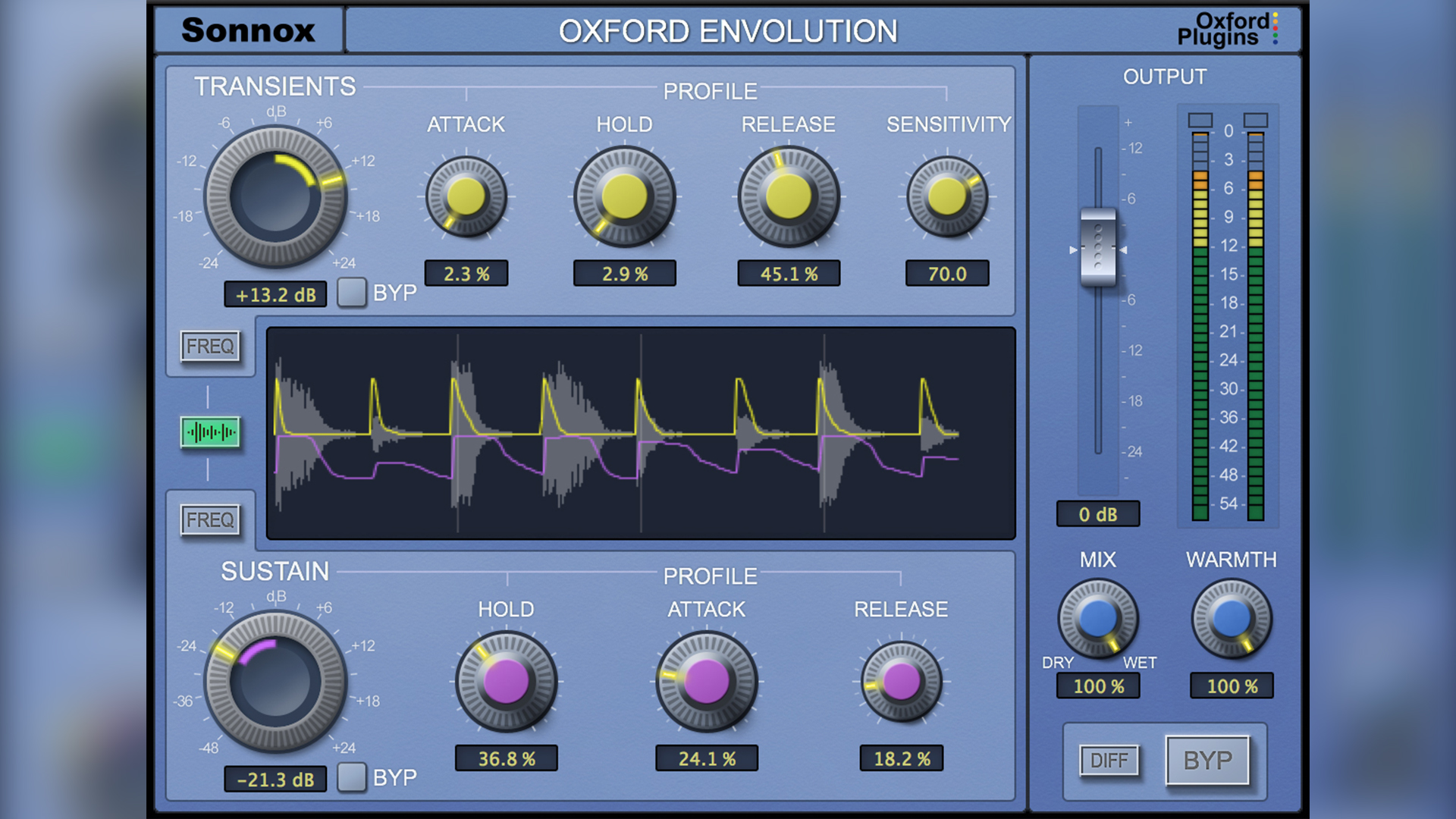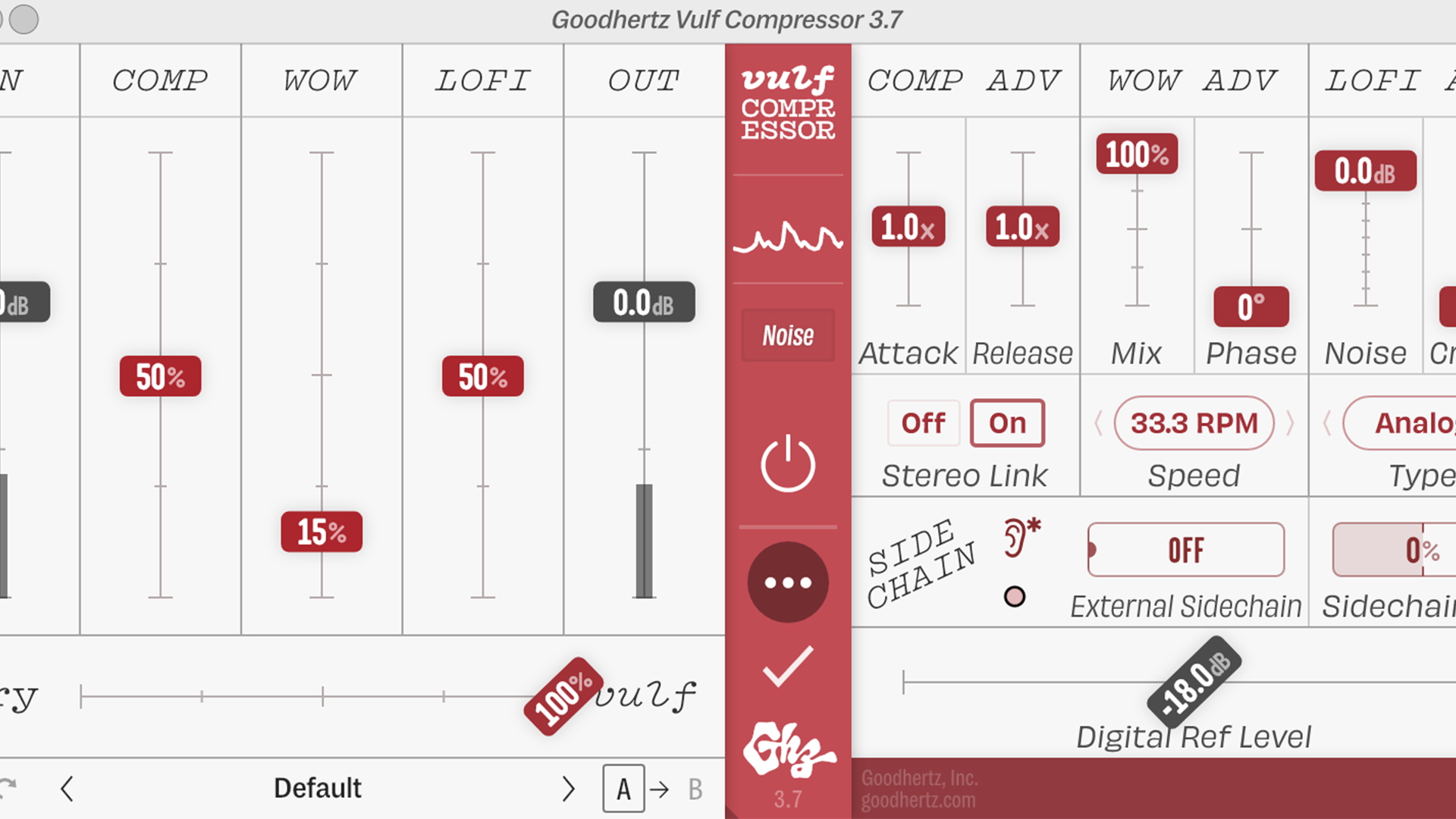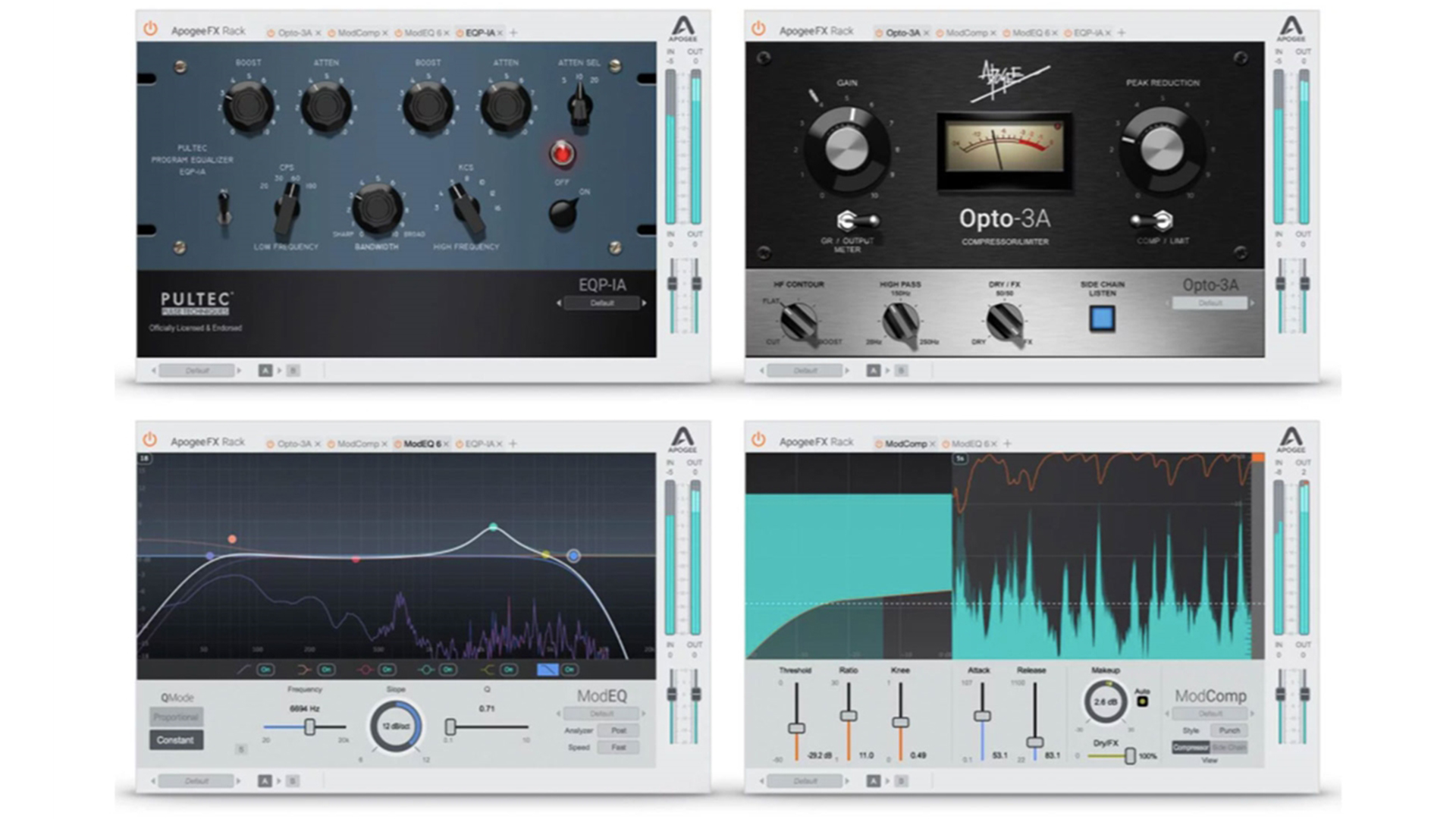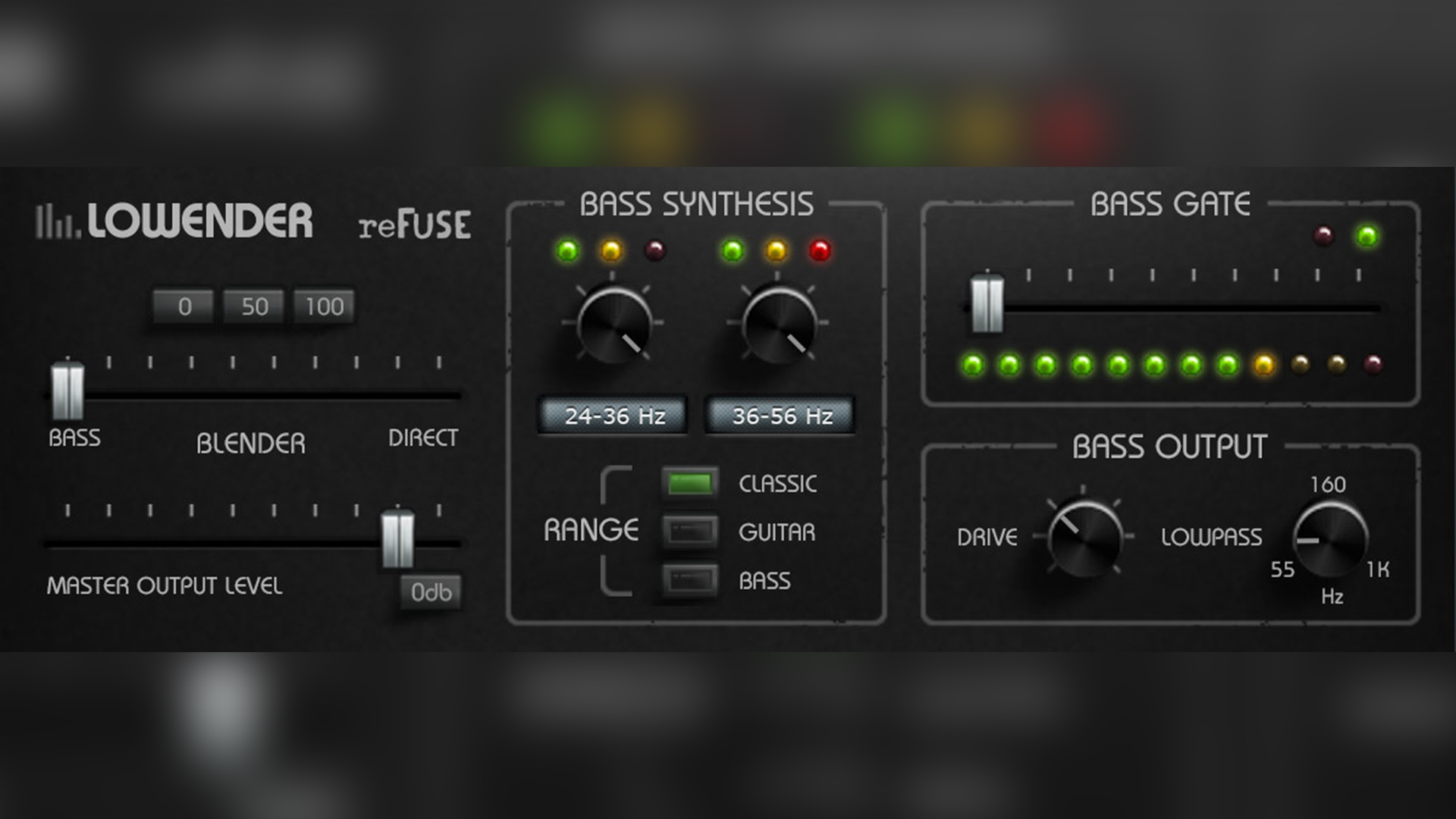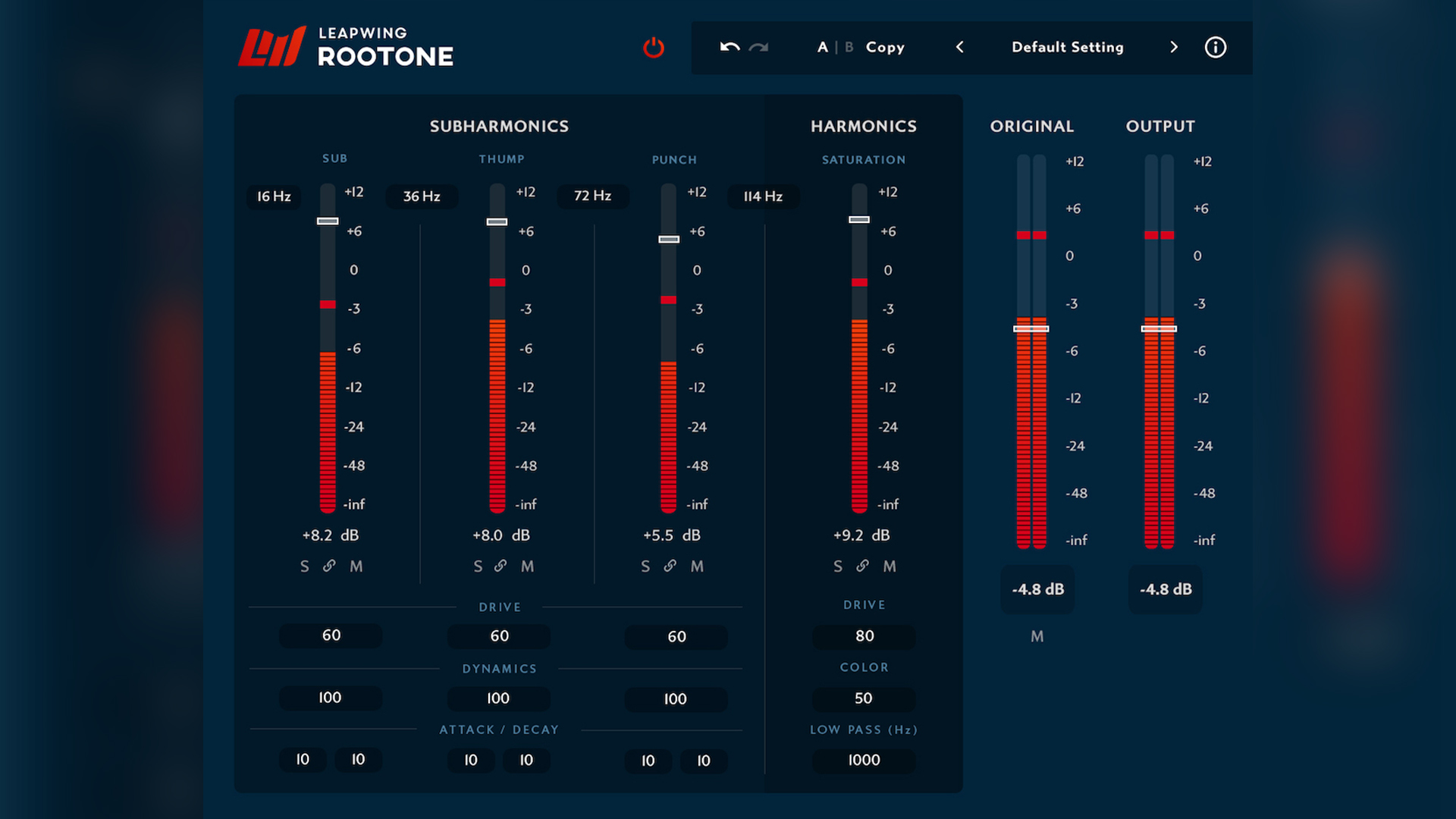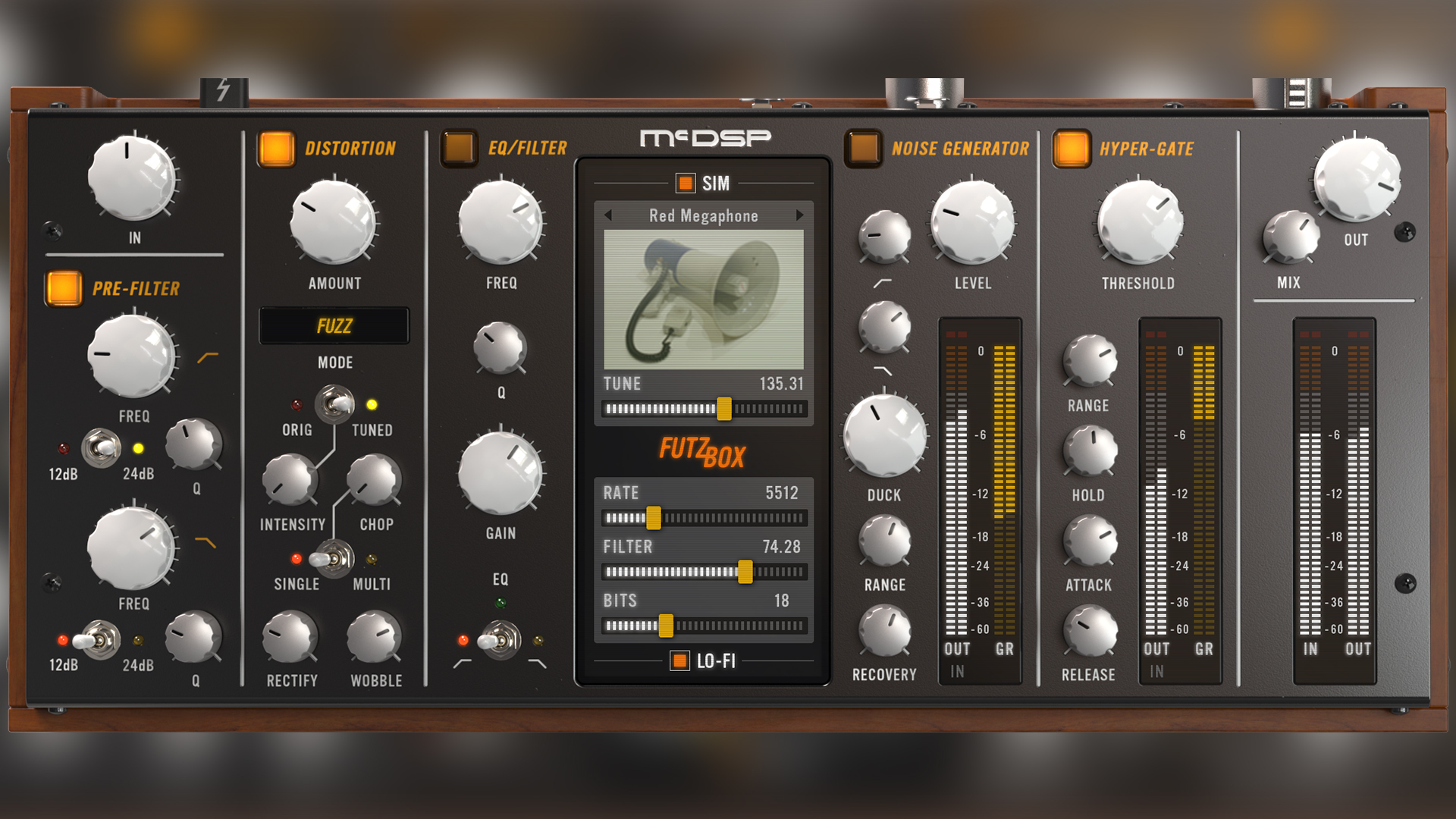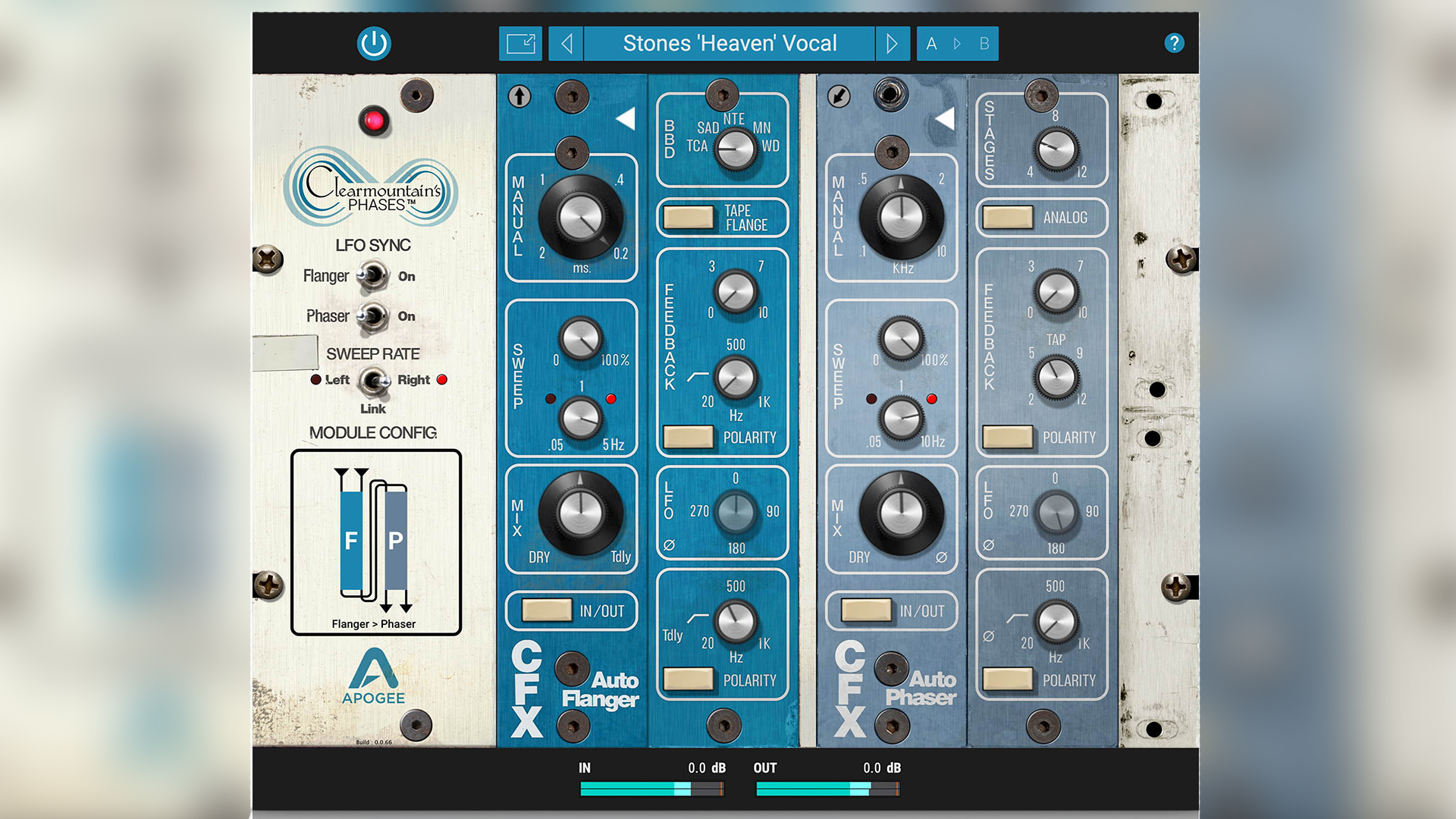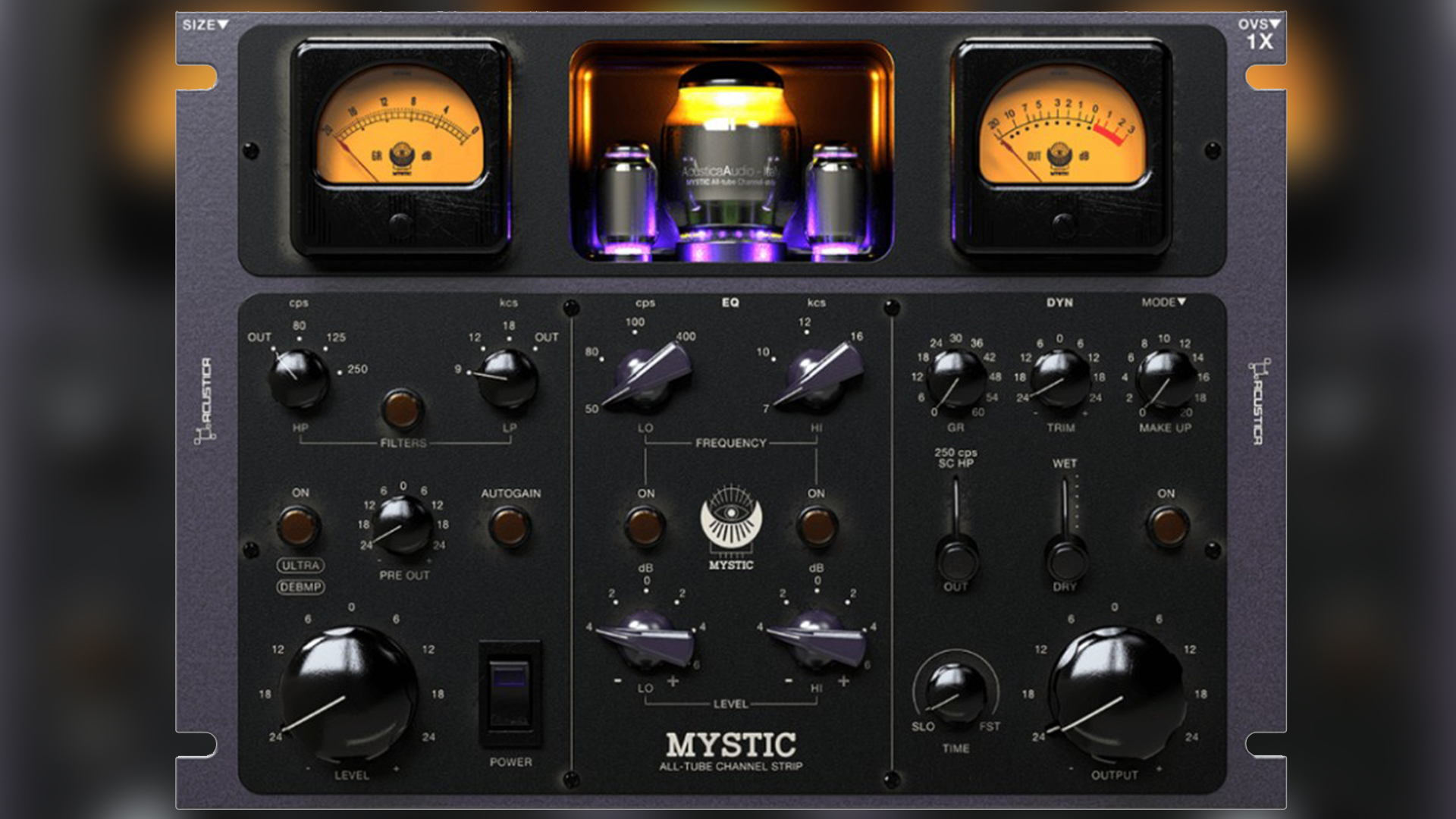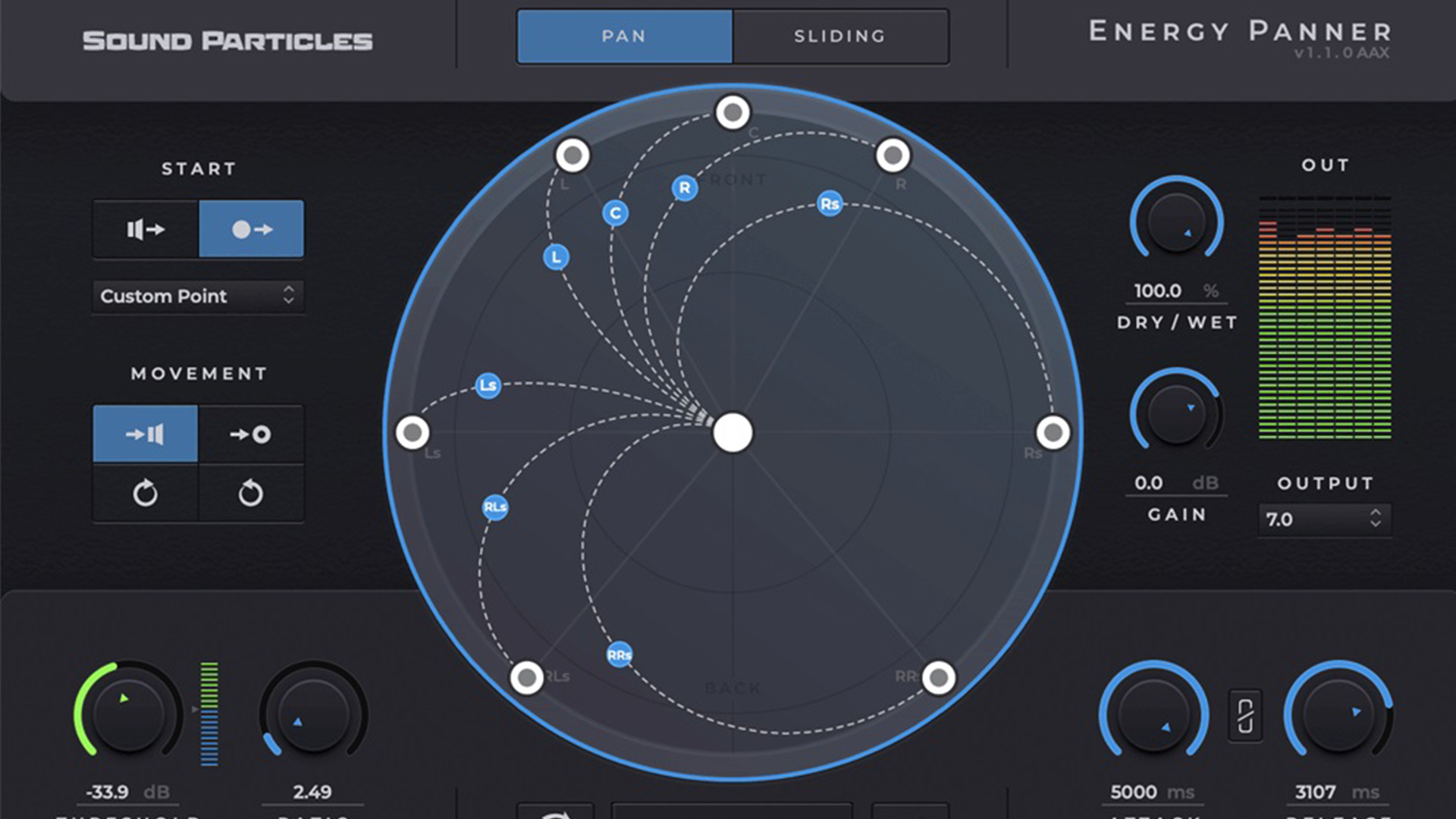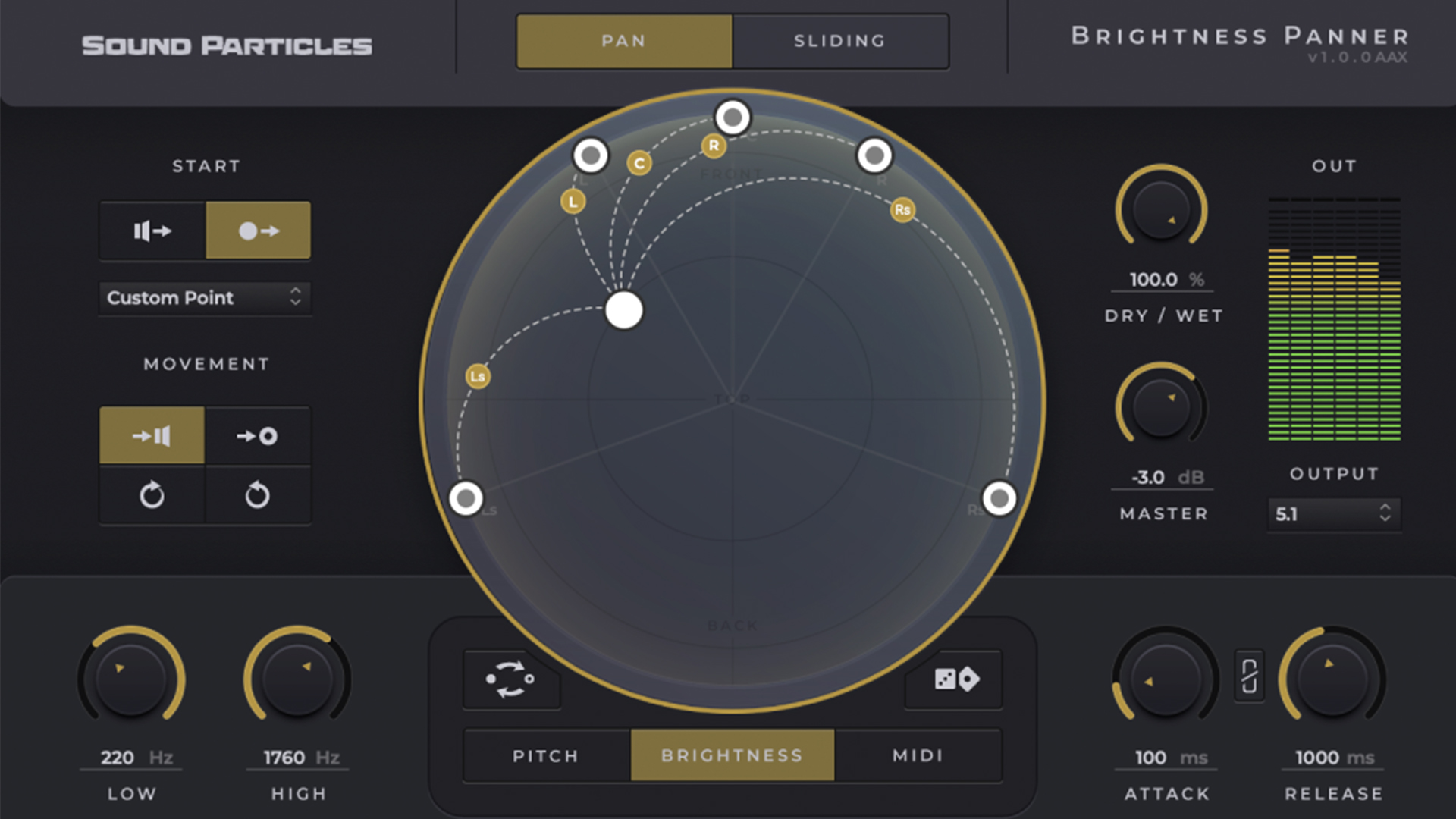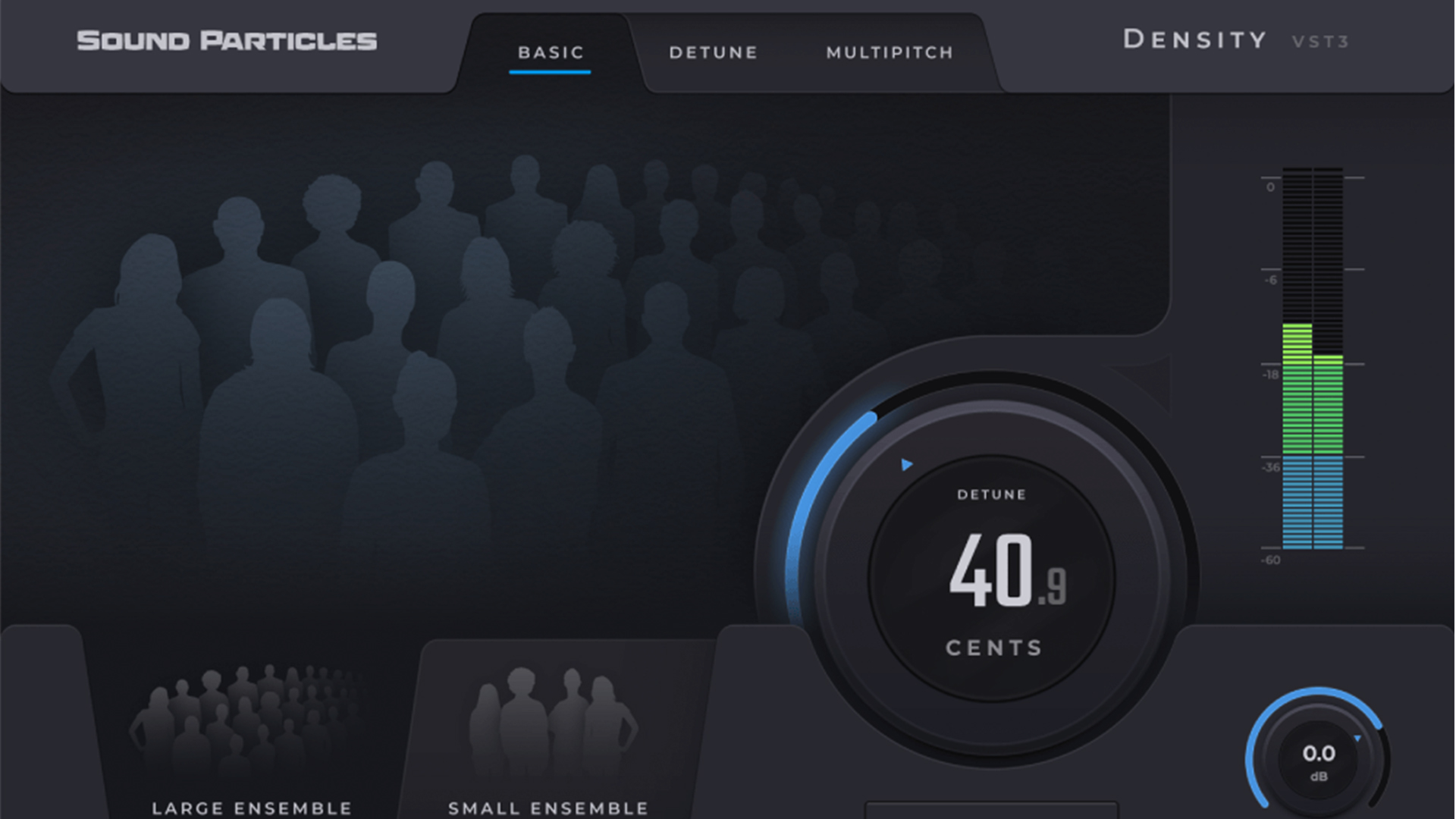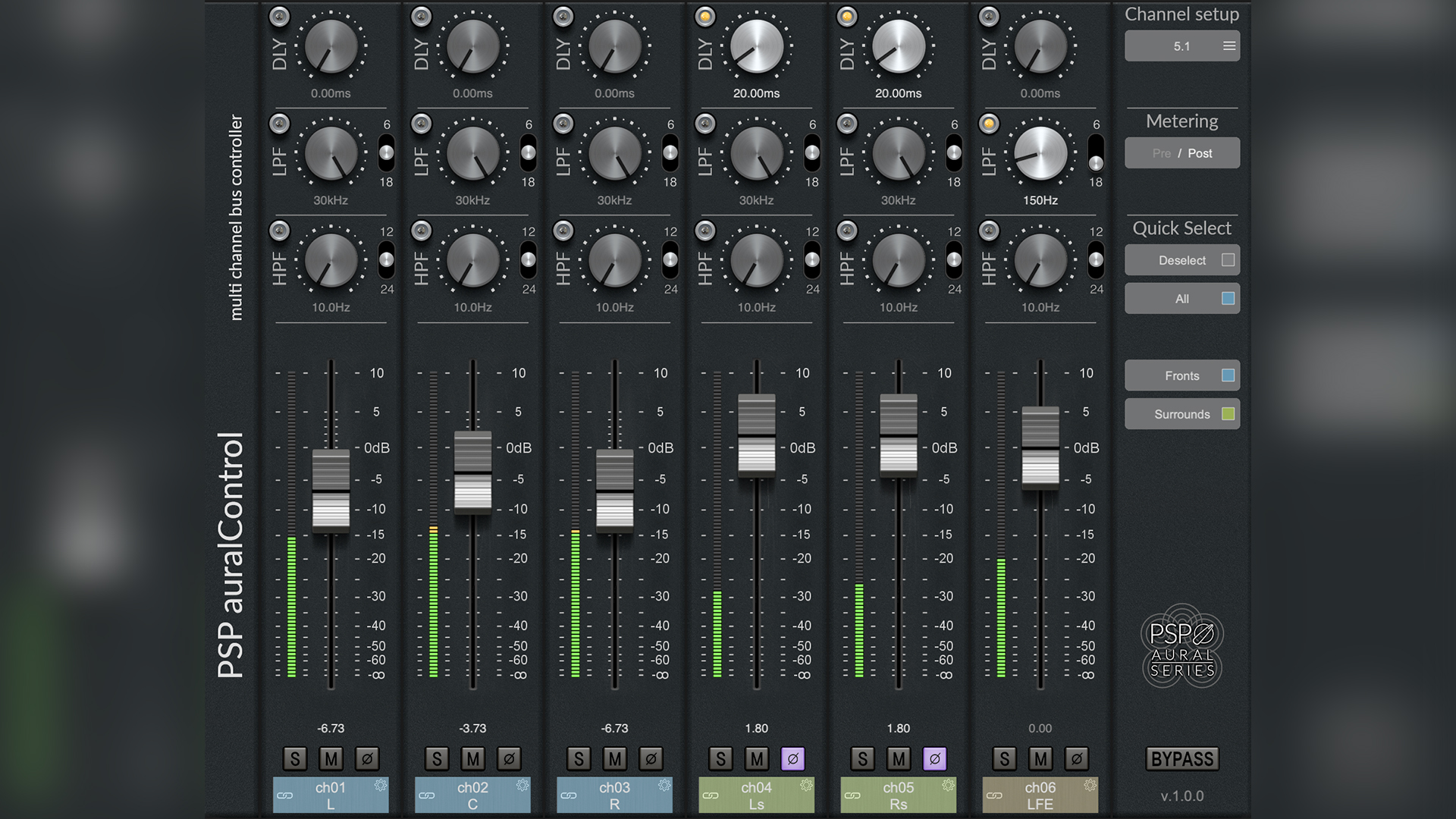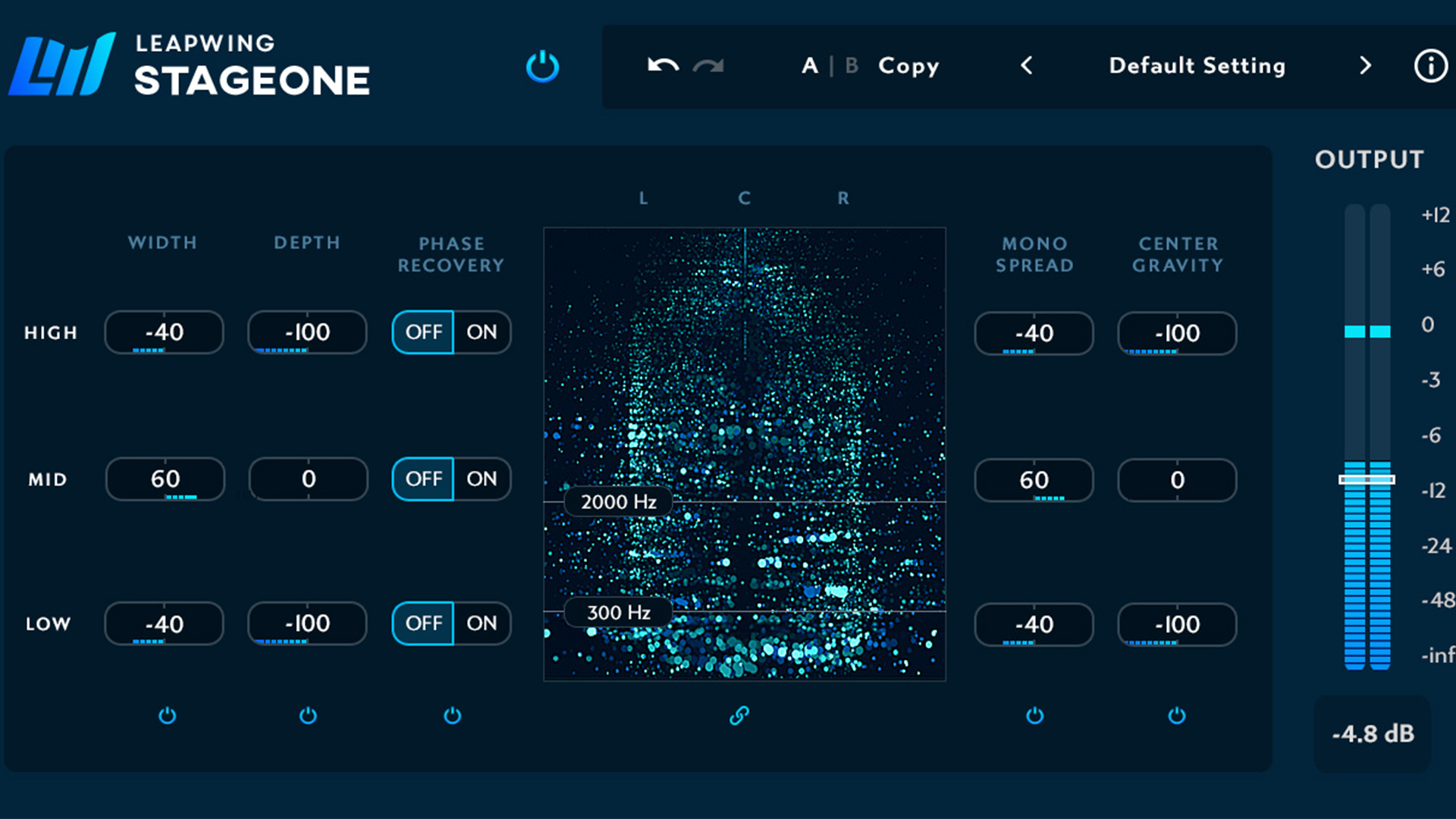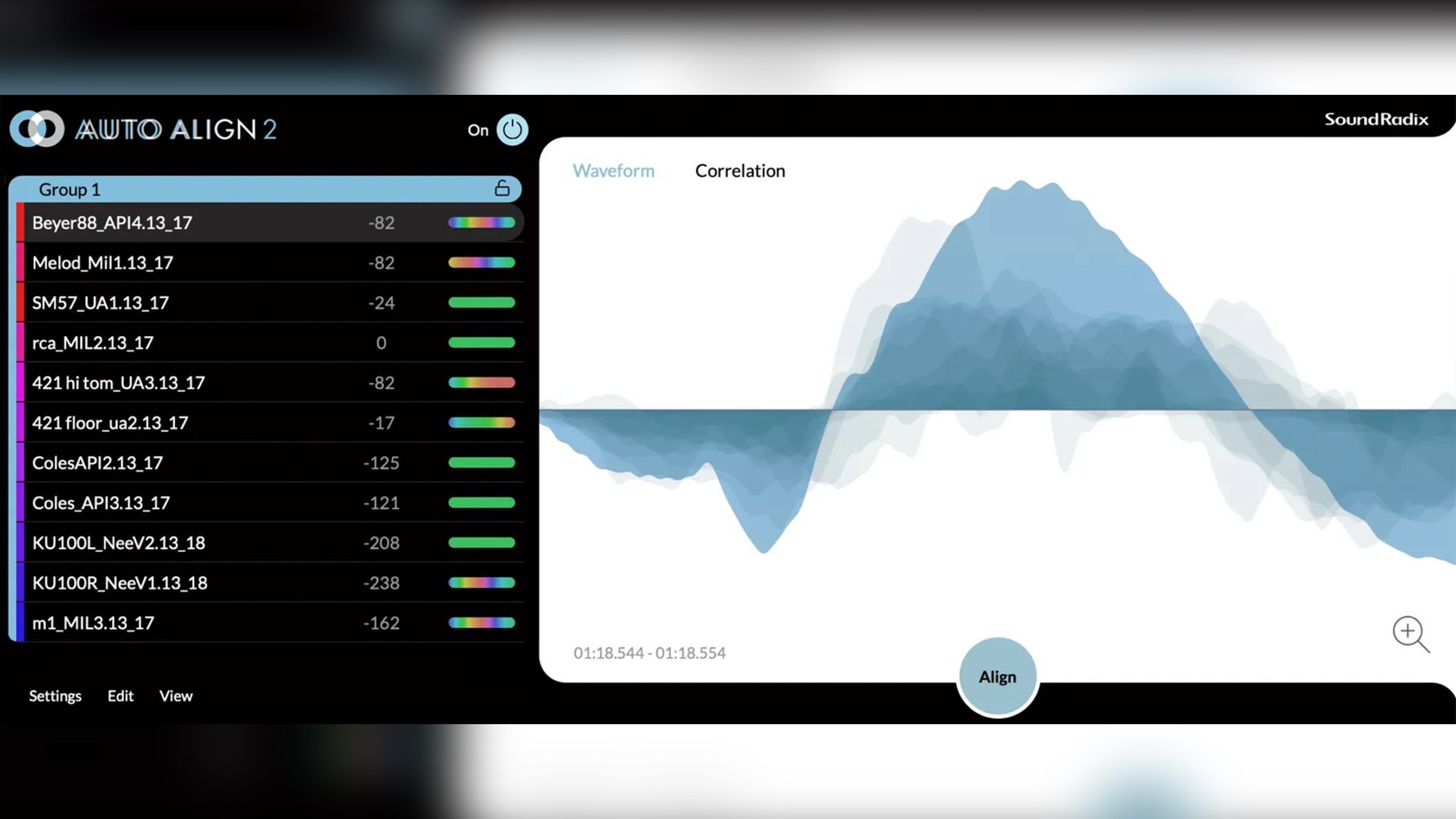Best Plugins for Film Score Mixing, According to Acclaimed Cinematic Mixer Alan Meyerson
In 2013, I wrote about my experience working and living at a residential recording studio called Saint Claire Recording Company in Lexington, Kentucky. Saint Claire was a dream recording studio in every imaginable way.
The studio itself was technically astounding. The residential facilities were charming, cozy, and unique. I was lucky enough to make records there that I’m enormously proud of. I also had the good fortune to learn from some of the best engineers and producers in the world like Neil Dorfsman, Phil Ramone, and Tony Visconti. Years after Saint Claire closed, Neil and I would often talk about Saint Claire like it was some shared dream that we couldn’t believe had actually happened.
There’s really nothing like the experience of living, and working at a world-class recording studio.
I’m convinced that the music created in those environments is enhanced by the shared experience of musicians, engineers, and producers communing together over days and weeks.
A decade after my time at Saint Claire, I had the good fortune to experience the magic and shared camaraderie of the residential studio experience again. In early November 2023, I traveled to the south of France to attend the Mix With The Masters week long seminar at Studios La Fabrique with acclaimed film score mixer Alan Meyerson.
I was a bit apprehensive about meeting twenty new people all at one time, in a foreign country, by myself. I remember telling a composer friend that I was attending. He told me he’d heard it was “life changing”. That sounded a bit dramatic, I thought. But life changing was exactly how I would later describe the experience to others.
My week in France with MWTM turned out to be one of the most fun, enlightening, and educational experiences of my life. Both Alan, and his assistant engineer Michael Gossard were incredibly kind and generous, sharing their time, their workflow process, and their experiences with the group.
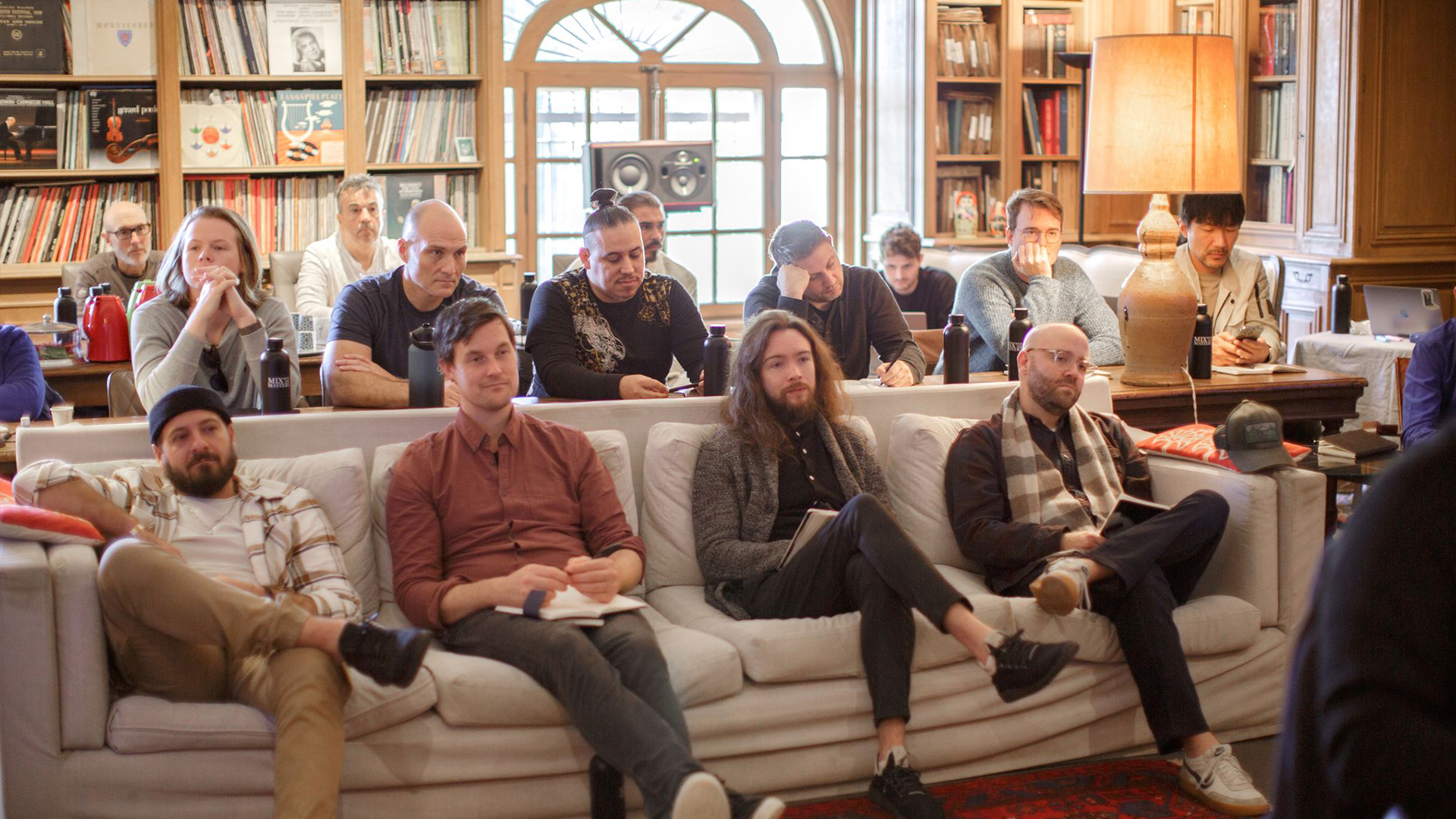
Students attending Alan Meyerson’s Mix With the Masters Masterclass in France. Photo: Romy Bella Levinsohn
If you’ve watched a movie in the last 30 years, you’ve experienced Alan Meyerson’s work. The film scores he’s mixed, (and often engineers) are some of the biggest and best-known movies in history. The Dark Knight, Gladiator, Inception, Traffic, The Pirates of the Caribbean series, Hannibal, I could go on and on.
I’ve always loved cinematic music and film score, and my career was starting to move in a direction that gave me new opportunities to work with film composers. Getting a chance to spend a week with Meyerson learning the craft of film score mixing from the undisputed master of the medium was too good an opportunity to pass up.
Mixing music for any genre these days usually means working entirely in a digital environment. This is especially true with the demands of audio post-production. And in-the-box mixing means one thing above all else: plug-ins.
A lot of plug-ins.
The 18 participants of the week-long seminar had the opportunity to not only dissect examples of Meyerson’s work, but were encouraged to bring our own projects for Alan to mix in person. One of the big takeaways from the week for me, was how many plug-ins Meyerson uses on his mixes that I either hadn’t heard of at all, or hadn’t yet had the chance to use.
Because this was such a learning experience for me, I wanted to share a round-up of some of the most fascinating, and most-used plug-ins from Alan Meyerson’s arsenal that transform film score mixes for the big screen.
There are of course many well-known plug-ins and bundles that Alan uses frequently. Companies like Soundtoys, Liquid Sonics, FabFilter and Waves are ubiquitous staples in the post-production mixing world, all of whom I would recommend whole heartedly. Fab Filter’s Pro-Q 3, and Pro-MB Multi-Band Compressor specifically are staples in Alan’s mix sessions. Liquid Sonics Cinematic Rooms, and Seventh Heaven are also both used consistently in Alan’s reverb packages and are truly amazing.
While those companies make exceptional sounding products, I found myself perhaps more interested in the sometimes lesser-known plug-ins often made by more boutique companies. Speaking from my own experiences as a mixer, I’ve found that it’s often the more esoteric plug-ins that end up having the most impact on my mixes – shaping sounds in unique, and sometimes unexpected ways.
I’ve broken down this Mix with the Masters plug-in roundup into four general categories:
REVERB
VSL: MIR Pro 3D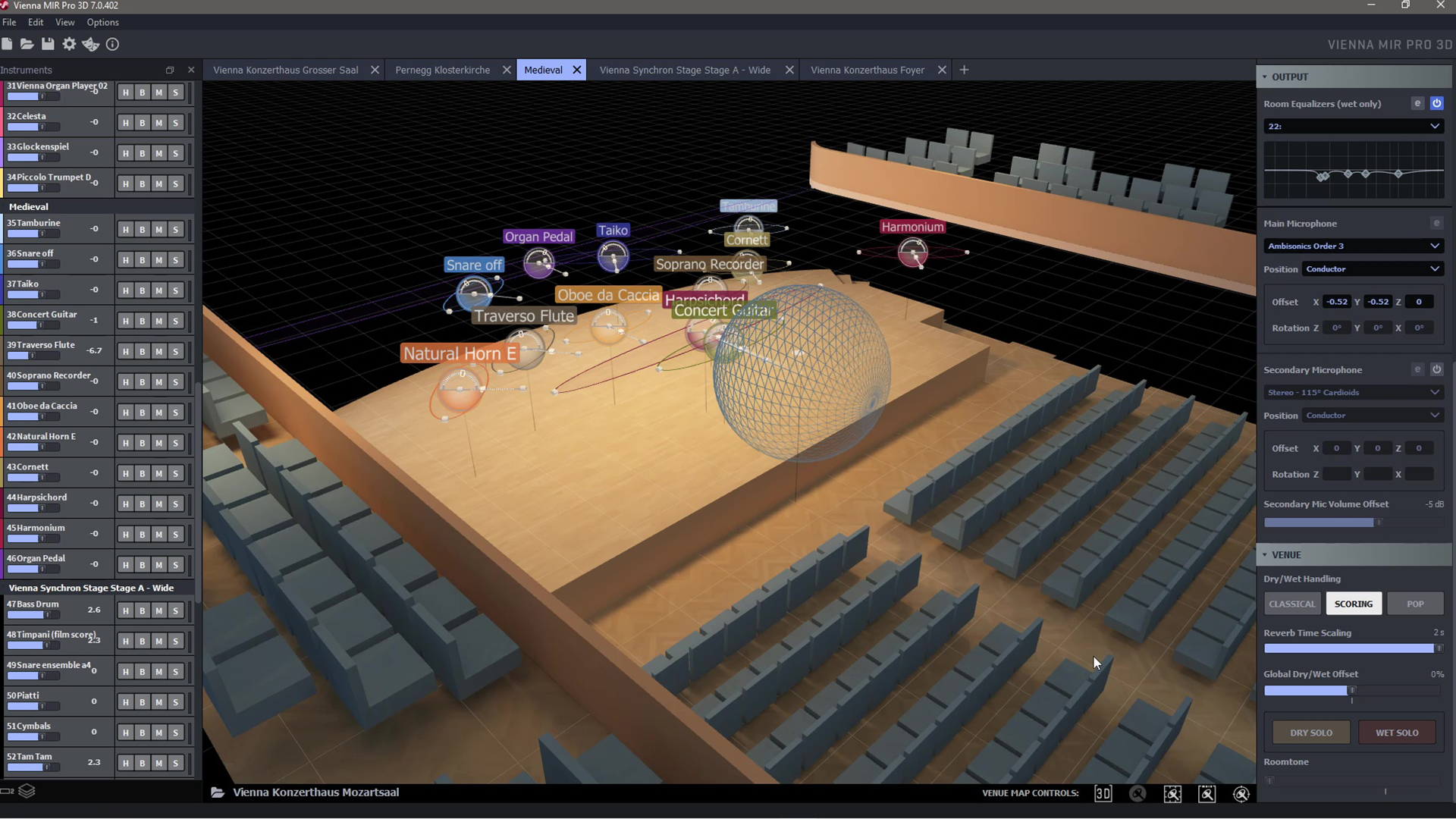
Vienna Symphonic Library is famous for its luscious and ultra-realistic string sample libraries. So it came as no surprise to me that when VSL turned their team and their technology to focus specifically on convolution reverb and realistic symphonic spaces, the results were simply astounding.
MIR Pro 3D is a powerful reverb engine and standalone app that gives mixers a wealth of options for stereo, surround, binaural, spatial audio, Dolby Atmos, Auro 3D, and Sony 360 Reality Audio. Alan Meyerson used MIR Pro 3D all over the recent Trent Reznor and Atticus Ross score for the David Fincher film “Mank”.
All of the MWTM attendees were blown away not only by the sound of the spaces available in MIR Pro 3D, but the ingenious layout that gives users a huge palate of available options to shape the sound of your instruments in ways that a traditional reverb plug-in really can’t compete with. I highly recommend taking a look at some of the videos of MIR Pro 3D in action.
Eventide: BLACKHOLE Immersive and MICROPITCH Immersive
I am completely addicted to Eventide’s Immersive plug-ins. Blackhole Immersive achieves that sound that makes you go “ohh, that’s how they do that!”. This plug-in is huge. Micropitch Immersive is so lush, I’m rapidly approaching over-use on my current score mix. Micropitch gives life, space, and emotion to synth pads, guitars, vocals with ease. Right out of the box, I instantly knew both Blackhole and Micropitch Immersive would become go-tos for me for score, and re-recording mixing as they are for Alan’s work with music. I’m currently using both Immersive plug-ins all over composer Forrest Gray‘s score for the upcoming feature film “Here’s Yianni”.
Eventide’s Immersive plug-ins are designed specifically for surround and Atmos mixing from LCR all the way up to 9.1.6. Just seeing “Kill Wet” and “Kill Dry” switches (which are automate-able and allow for great creativity), should tell you everything you need to know about the sheer size of this reverb.
For Blackhole, controls for Gravity, Size, and Feedback are it’s core. Micropitch employs a Detune section broken up into Left / Right, Front / Rear/ and Top / Main. Where these plug-ins really stands are in the surround capabilities. Each of the three main controls for both have a front/rear tilt slider that gives users surgical control over the main control knobs in the surround field. The equalizer section can be adjusted overall, or separately between front and rear.
A built-in mixer allows for metering and easy control over how the overall reverb is blended across the front and surround channels. Finally, the Morph slider brilliantly allows users to set a wide variety of controls and EQ settings, and then blend between the two with the Morph slider.
Both Immersive come loaded with fantastic presets. My biggest problem with both of these plug-ins is every preset sounds good on everything. This inevitably leads me into a preset black hole of my own trying to make a decision about which preset to start from for any given instrument. Eventide’s dedication to multi-channel control is unparalleled with the Immersive line. These are by far the MVPs of my score mixing arsenal.
Audio Ease: Altiverb XL
The folks at Audio Ease make some of my favorite plug-ins for post production and music mixing. I previously reviewed Indoor which is a must-have for film and dialogue mixing. Speakerphone is an indispensable tool for helping me bring film dialogue, music and FX into every imaginable device from speakers, to cellphones, to TVs and more.
For nearly twenty years now, Altiverb has been the gold standard of plug-in convolution reverb. For me, Altiverb is more than just a reverb. It’s a sonically accurate historical snapshot of some of the most famous acoustic spaces in the world. I’ve used Audio Ease’s proprietary sampling technology to capture public and privately owned studios like Saint Claire Recording Company and many other spaces which are now gone, or have been transformed for other uses.
In France, Alan showcased Altiverb XL in a number of ways in his score mixing workflow. One great use of Altiverb was as a stereo instance on a pair of room mics for an orchestral recording.
Using the Amsterdam Concertgebouw hall, Altiverb brings depth, and size to the orchestra’s room when blended with the rest of the mics. Altiverb is now up to date for Pro Tools 64-bit Native with Version 8.
This expansive and long anticipated update to Altiverb brings Dolby Atmos support up to 9.1.6. I was fortunate to have been invited to beta test Altiverb 8XL and I was extremely impressed with the sound of the IRs particularly in surround.
One of the other MWTM participants asked everyone what their desert island reverb would be. That is, you only get to take one with you to use on everything. Without hesitation, I said Altiverb.
Apogee FX Plug-ins: Clearmountain’s Spaces
For years, going back to my time with Neil Dorfsman, I had heard the legends of prolific producer and mixer Bob Clearmountain’s personal reverb chamber. So when I read that Clearmountain and Apogee had teamed up to package Bob’s personal reverb chamber along with two other distinct spaces into a plug-in, I couldn’t wait to get my hands on it.
Clearmountain’s Spaces offers three different distinct reverbs, all sampled from actual spaces using convolution reverb sampling technology to create impulse responses. The plug-in also features a built-in mixer allowing users to create their own unique blend of reverb.
The three spaces are: Apogee Studio – a short and warm ambience, Mix This! – a medium length bright reverb which serves as Bob’s personal echo chamber at his studio in Los Angeles, and finally Roscoe – the longest reverb of the set.
Roscoe was captured with AEA Ribbon Mics giving this impulse response an incredibly warm and inviting sound that delivers silky richness. The brilliance of Clearmountain’s Spaces is, each of the three IR’s sampled are very distinct in their decay time, and timbre.
Because the nature of each of the three available rooms is so unique, they really do sound fantastic when blended together. As an added bonus, each of the presets in Clearmountain’s Spaces were created by Bob himself. It’s no surprise Alan uses Clearmountain’s Spaces on his film score mixes.
And by the way, at $49, This reverb is undoubtedly one of the best values on the market.
Goodhertz: Megaverb
Goodhertz bills Megaverb as “Incredibly good bad reverb” and “The most powerful 80’s reverb emulation the world has ever heard”. So, right away you know that if you’re reaching for Megaverb, you’re searching for a sound outside of the traditional reverb lanes.
The interface itself is a visual throwback and is feature-packed with many of the traditional controls one would expect for a reverb, along with some unique Goodhertz additions. The LoFi module for instance models the distinct lack of resolution of 80’s digital converters.
This is the heart of what makes Megaverb a standout. Four modes (A B C D) will get you started quickly. They’re described as quick and resonant (A), weird and nonlinear (B), smooth and cavernous ©, and a larger cavern (D).
I would encourage you to check out the Goodhertz story, and the samples of this distinctly 80’s reverb to hear what it’s really all about. Megaverb is a great example of why it’s important to have not just reverb in your toolbox, but lots of different kinds of reverb.
Relab Development: LX480 Dual-Engine
Relab’s LX480 is the 480 in plug-in form. It’s the only sample-accurate recreation of the original hardware 480 on the market. You know this reverb. You’ve seen the famous remote sitting atop analog mixing consoles either in person, or in photos from all over the world. It’s a classic for a reason.
The LX480 brings instruments and voices to life with its gorgeous Halls, Plates, and Rooms. The interface is a stunning GUI replication of the original hardware with it’s intuitive controls. I found myself reaching for virtual sliders from muscle memory that I hadn’t used in over a decade. Take it from the best mixers in the world like Alan Meyerson, Tom Elmhirst, Joe Carrell and more.
The LX480 is a permanent part of Alan’s score mix template serving as a go-to reverb for orchestras, synths, percussion, and more. The Dual-Engine version gives users the ability to use two 480 algorithms at once in four different configurations.
Slapper is the must-own multi-tap surround delay for music, and post production. Slapper can do everything you’d expect from a feature-dense delay and a whole lot more.
Justin from The Cargo Cult sums up Slapper most effectively on the website saying “We really don’t give a shit about accurate geometry or modeled acoustic environments. We designed Slapper to be ‘effective’ – not ‘real’. We want to sell the idea of a space to your audience – not your physics teacher.”
Point taken. The brilliance of Slapper is seen and heard through it’s dense collection of presets to help you get moving quickly.
Version 3 of Slapper is out now and is a huge update for this already groundbreaking delay. Some of the key features now available in Slapper 3 include: Crosstalk from one tap to another which helps create all kinds of interesting sounds, and feedback effects, ducker, for feathering a delay onto the tail of the sound, and tap delay functionality. Other new features in Slapper 3 include new surround formats which accommodate up to 9.x.6, a new power-user presets collection, and more.
EQ / DYNAMICS
OEK Sound: Soothe and Spiff
Finland-based OEK Sound have created two spectacular plug-ins in Soothe and Spiff. Soothe is a resonant suppressor, something sort of between an EQ and a compressor. This is an absolute must-own for all audio post-production work in music, or film.
Soothe is a brilliant de-esser, tamer, and all around sound shaper that gives mixers like Alan a tool that does very specific, often surgical jobs so easily. I use soothe on practically every mix. It allows me to use less subtractive EQ to keep the tonal qualities I love from an instrument while taming the problematic areas.
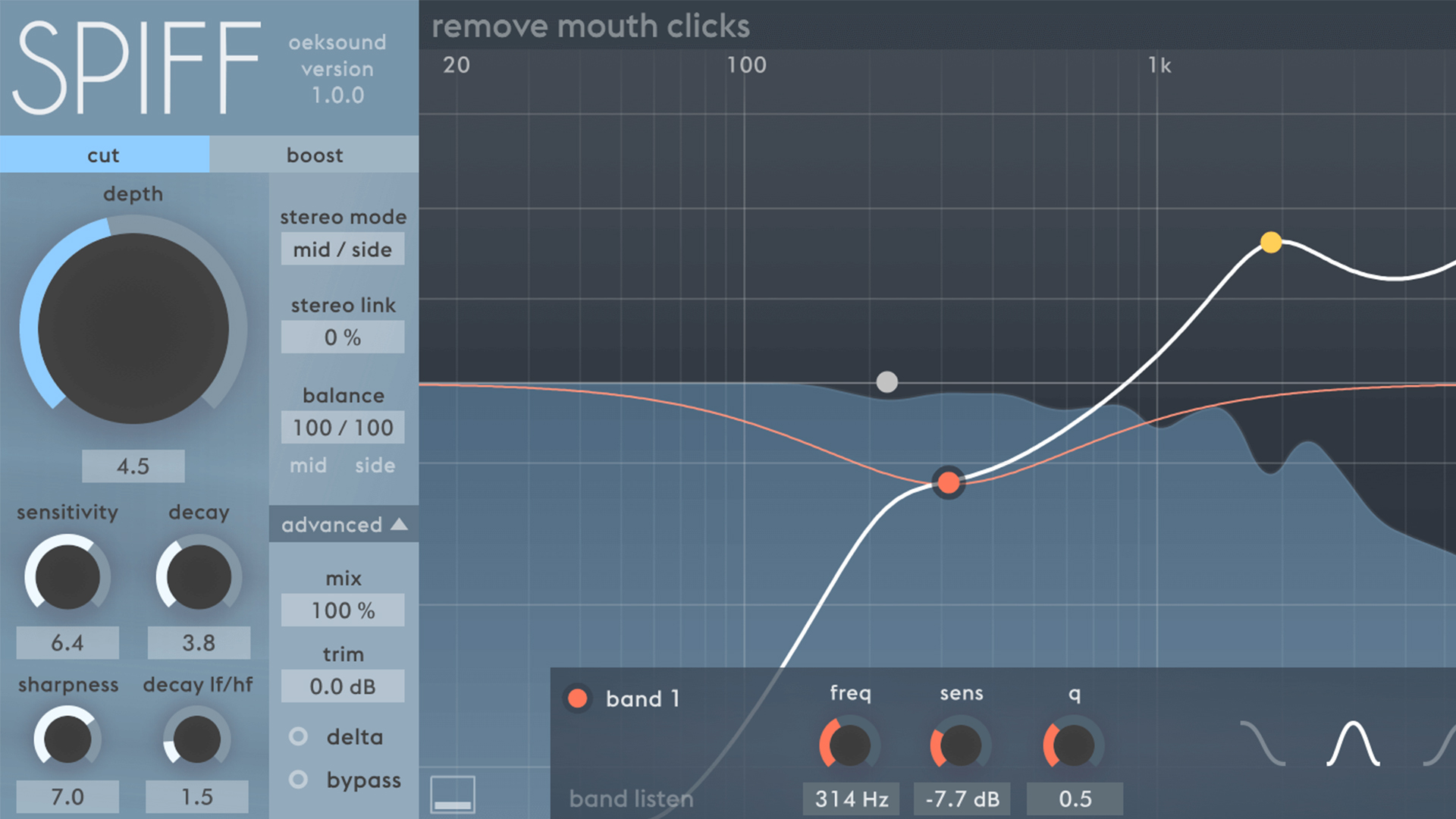 Spiff accomplishes similar things specifically for transients in percussive sounds of all kinds. Spiff gives users the ability to sharpen, or soften the transients of a drum, acoustic guitar, or a marimba with ease.
Spiff accomplishes similar things specifically for transients in percussive sounds of all kinds. Spiff gives users the ability to sharpen, or soften the transients of a drum, acoustic guitar, or a marimba with ease.
Both Soothe and Spiff are used on every mix I work on from podcasts, to film, to score mixing. They sound incredible, and allow me to solve problems quickly.
PSP Audioware: Vintage Warmer, OldTimer, E27
In the world of plug-ins, PSP would be considered vintage at this point. I can remember using the PSP Vintage Warmer 20 years ago in college on my iBook laptop (remember those?) One of the things I love about PSP is, depending on the plug-in you’re using (46 and counting) the GUIs range from, shall we say classic to sharp and photorealistic.
The PSP Vintage Warmer is a classic both visually, and sonically. There’s a reason why it’s one of Alan’s go-tos 20+ years since it’s release. Vintage Warmer brings rich, analog sounds into the digital realm. Easy to use controls for Drive, basic EQ, and limiting features give users a wide range of control over how much saturation they want to employ.
The PSP E27 is a faithful digital re-creation of the Avedis Audio 500 series E27 EQ module. The E27 offers +/- 16dB of gain control at musically selected frequency ranges. This EQ sounds fantastic on everything from percussion, to brass, strings and more.
PSP Old Timer also has made its way into Alan’s toolbox. No two compressors are alike, even in the digital domain. PSP’s Older Timer is a great addition to any dynamics arsenal. Old Timer is not specifically modeled after one compressor, but inspired by vintage circuity and sounds and feels similar to many classic vintage compressors.
Massenberg Design Works: MDWEQ6 / MDWDRC2
It should come as no surprise that the creator of parametric equalization, George Massenberg, has created a state of the EQ plug-in that matches, or dare I say improves on the studio staple GML 8200.
The MDWEQ6 was a constant go-to in France for Alan. The EQ6 was used most-often as a surgical first step EQ for finding and squashing problematic frequencies. Targeting them both by ear, and with the real time analyzer, Alan often employed the band solo feature to listen in precisely on sharply notched frequencies that needed to be carved out.
The MDWDRC2, Massenberg’s dynamic range controller. As George Massenberg himself says “It’s just better”. The MDWDRC2 shines at controlling the dynamic range of an instrument while remaining true to the original intent of the artist. Massenberg is careful to say it’s not a compressor, it’s a dynamic range controller”. The DRC2 was a favorite for Alan on live orchestral percussion, and sample-based drums.
Soundtheory: Gullfoss EQ
The Gullfoss EQ, the first plug-in from Soundtheory is unlike any EQ you’ve ever seen or heard. Gullfoss changes its frequency response on the fly up to 300 times per second. Sound Theory has been explicit in mentioning that this is not AI technology and does not use neural networks.
Because the nature of the Gullfoss EQ is entirely different from a traditional EQ approach, the toolset is also entirely unique. Four main controls Recover, Tame, Bias, and Brighten give users simple control over how to use Gullfoss to shape the sound of individual instruments, or entire mixes.
A little goes a long way with the Gullfoss. I’ve come to use Gullfoss as a final “live EQ” on my score mix stem busses. Many world-class mixers have come to rely on Gullfoss to enhance their mixes.
Pulsar: 8200
Pulsar’s 8200 plug-in is a beast. A faithful representation of George Massenburg’s GML 8200, the Pulsar 8200 is packed with features, sounds incredible, and features a beautiful interface. The frequency analyzer is responsive, helping visualize problematic areas.
Five traditional bands per side (in stereo) give users a wide range of control. Where the 8200 really stands out to me is in the extras like the tilt knob that shifts the entire EQ curve to be top end, or low end heavy. There’s also a built in de-esser that sounds fantastic and really helps carve out sibilance issues on the spot without having to open up another plug-in.
The Pulsar 8200 immediately became a go-to for me and I can see why it’s at the top of Alan’s list of EQs.
Eventide: Split EQ
Split EQ falls into a category of tonal shaping plug-ins similar to Soothe or Spiff. Split EQ is basically two EQs in one. The green side shapes transient information, and the blue side shapes tonal information. I highly recommend spending some time with the mid-side EQ section of this plug-in as well and how they relate to each other.
Split EQ is an insanely powerful way to approach tone shaping that gives the user a much wider palette when working with all kinds of sounds from drums and percussions, to vocals, and strings. I will note that Split EQ falls into the category of plug-ins that required a video tutorial for me.
Once I took ten minutes to see what this plug-in can really do, it instantly became a go-to for me. I constantly reach for Split EQ to quickly solve tonal and harmonic issues with things like acoustic guitars, where I want to reduce the resonant frequencies, without sacrificing the percussive nature of the instrument.
I recently reached for Split EQ during a live mix revision session with a composer. He was asking for a change in the sound of an acoustic guitar instrument, something that normally would require quite a bit of work, and multiple plug-ins, or edits to achieve. With Split EQ, I simply dialed up the resonant frequency that was problematic and ducked it without touching the transients. My composer was amazed when he could hear the different in real time.
McDSP: ML4000 Multi-band Dynamics
The ML4000 multi-band dynamics limiter was Alan’s go-to for taming, and transforming percussion trackss during our sessions in France. This plug-in does wonders for surgically enhancing low, and mid range on drums, and is a must-use for many mix engineers across their master fader.
While multi-band dynamics aren’t exactly the most intuitive plug-ins out there, it’s worth devoting a little time to learning how tools like the ML4000 can drastically enhance your sound.
Fortunately, ML4000 comes with a wealth of presets for individual instruments, and mastering presets to get you started right away. I would recommend checking out this detailed rundown from McDSP on the ML4000 and it’s powerful capabilities.
Relab Development: Maselec MEA-2
The Relab MEA-2 is the Leif Mases officially endorsed digital re-creation of the iconic Maselec MEA-2 mastering EQ. This EQ in hardware form sells for big money on the secondary market.
With Relab undertaking its plug-in version, I knew it would be nothing less than perfection. All the same controls from the original version, like .5dB steps on the cut/boost knob come to life in the brilliant looking MEA-2 plug-in. Surpassing the hardware, the Relab MEA-2 offers Mid-Side processing individually on every band allowing users to surgically fine tune their sound.
Sonnox: Oxford Inflator and Envolution
Among the products in this roundup, Sonnox would be considered old school. With roots dating back to the Sony Oxford digital consoles of the mid 1990’s, the Oxford plug-in series have been a staple for countless mixers for nearly 20 years now.
The Oxford Inflator is one of those “can someone please demystify this for me?” plug-ins. Inflator increases the perceived volume of your mix without sacrificing dynamics. It adds harmonic content, and to me sounds something similar to sub-squeeze compression, but with a gentler, and smoother sound. Alan uses Inflator as a controlled group of plug-ins across his mix bus stem tracks.
Meaning, Inflator is one of the last plug-ins that the groups of tracks that make up the mix pass through before being printed. I recall Alan mentioning one famous film composer (no it wasn’t Hans) who had listened to a recent mix that Meyerson had completed of his cue. The composer asked “What are you using to get that Inflator sound!?” Alan simply said “Inflator”.
Oxford Envolution provides frequency dependent control over transient and sustain of a sound. Envolution is the sound for huge drums, adding more smack, and longer more reverberant decays. Envolution can also be used in parallel without phase cancellation issues which makes it possible to push it to the max, while still blending the sound to taste.
Goodhertz: Vulf Compressor
The Vulf Compressor is anything but another compressor. As mentioned by Goodhertz, Vulf Compressor is based on a “radically weird compression algorithm from the Boss 303 Dr. Sample Sampler”.
Standout controls include WOW for pitch shifting insanity, LOFI for harmonic distortion and decreased high frequency resolution, as well as advanced controls for injecting even more noise, crunch, and sure, normal things like attack and release.
The presets for Vulf Compressor are similarly off the wall and include settings such as Slam, Crush, Mono Flange, Max Distortion, and Bad 1980’s digital.
Apogee: FX Plug-ins
A number of Apogee FX plug-ins made appearances throughout the week. The Pultec EQP-1a and MEQ-5 are fantastic renditions of the classic hardware. The Opto-3A is also a faithful representation of the classic LA-3A.
The standout among the group for me is the ModEQ. It’s a simple and clean 6 band equalizer with a lightning fast visual analyzer. Paired with the band solo feature, ModEQ quickly solves harmonic problems by soloing and targeting frequencies that need to be squashed.
PITCH SHIFT / HARMONICS
reFuse Software: Lowender
Lowender is the LFE enhancement plug-in of choice for Alan. I noticed an instance of Lowender lived on each LFE stem in Alan’s score mixing template. Lowender is a blendable, dual engine subhamornic generator taking whatever is fed to it and outputting massive subharmonics, mixed to taste via the Blender knob. Three different frequency ranges to choose from give users plenty of control over how low they may choose to go.
Leapwing: Rootone
Leapwing’s Rootone and Stageone (detailed below) were some of Alan’s most frequently used plug-ins throughout our week at MTWM. Rootone is all about subharmonics and low end enhancement.
Sub, Thump, and Punch roughly breaks down the low end frequency spectrum around 30-50, 60-100, and 110-196. This gives users enhanced control over the precise amount of low end to boost on an instrument. The Harmonics and drive sections add crunch and harmonic distortion to taste.
Rootone is in the class of plug-in that looks great, sounds amazing and is easy to use and understand right out of the box which makes it an easy go-to for guitars, bass, synths, or on a mix buss.
McDSP: Futzbox
McDSP have been a mainstay of the pro audio world for 25 years. First released about 15 years ago, Futzbox is a distortion and noise generator plug-in that essentially makes all sounds lo-fi. Useful for both music and post-production mixing, Futzbox relies not on convolution technology, but rather synthetic impulse models, or SIMs to provide accurate modeling with no latency.
I recently used Futzbox to accurately replicate the sound of dialogue through a cellphone speaker. In the center of Futzbox is a picture of what the plug-in is emulating. The default is a vintage box speaker, but selecting the speaker bring up a stunning collection of SIMs that I can only estimate is at least 200 deep.
Cell Phones, Earbuds, Televisions, Headphones, Radios, Toys, Vehicles, Guitar Amps, Fax Machines, you name it. Futzbox is jam packed with every imaginable device. Check out the examples on the Futzbox page for a wide range of sample audio from drums, synths, vocals, and dialogue that all benefit from the Futzbox treatment.
Apogee: Clearmountain Phases
I ran into producer Neil Dorfsman at a party recently, and we were talking gear. Clearmountain Phases came up and Neil exclaimed without hesitation “it’s THE BEST” phaser / flanger out there, why is it so good!?”
Meticulously modeled after Bob’s personal rack modules, Clearmountain Phases sounds as good as it looks. This really is the only plug-in you’ll need for anything phaser/flanger. Packed with features like model configuration you can choose to use Phaser and Flanger individually, or route either model the other.
Adhering to one of Alan’s keys to a great mix, the sweep rate switch allows for controllable panning of the effect. A wealth of presets like Bowie ‘China Girl’ Vocal, or Stones ‘Heaven’ Vocal will get you started quickly.
Acustica Audio: Mystic
Mystic is an all-tube channel strip faithfully replicating genuine analog tube hardware. Mystic shines on on a mix bus, or on individual instruments and groups. The plug-in has three basic sections, an input and preamp, EQ, and dynamics.
Alan used Mystic as the last plug-in in a chain on a string section. The HI and LO eq are similar in sound and feel to a Pultec, but with a softer, airy quality in the highs and a warm textured depth in the lows that really shines on vocals, strings, and percussion.
SOUND FIELD
Sound Particles: Energy Panner, Brightness Panner, Density
The brain gets bored easily. This was a lesson learned early in our week with Alan at MWTW. One way to keep the listener engaged is to create a sense of motion, or movement in the elements of a score mix. Sound Particles make immersive audio products that solve this problem with ease.
Energy Panner, and its sister plug-in Brightness Panner are the perfect solution for bringing motion to a mix on the fly. Using dynamics controls familiar to a compressor, Energy Panner brilliantly uses the intensity of a sound as the driving force to create motion panning within the stereo, or surround field. This movement can be mixed to taste giving users full control over how drastic, or subtle to move their track.
Similar to Energy Panner, Brightness Panner uses the frequency, or tonal characteristics of the sound source to create motion. The controls on Both Energy and Brightness Panner plug-ins are very intuitive which means I don’t have to waste much time dialing in a sound I love that really gives composers and directors a wow factor.
Density is all about layering. What might start as a single voice, or string part can become an entire ensemble with Density. I was floored by how the realism that Density brought to my mix helping create a rich layered texture to a vocal track. I would recommend checking out some examples of Density to hear how powerful this plug-in is.
PSP: Aural Control
Aural Control is a newer, more modern PSP creation. I could see instantly why this plug-in was an essential tool for Alan when he demoed it for us in France. Aural Control gives users total control over delay, filtering, level, polarity, and bandwidth for multi-channel tracks in a mix.
You may, for example want to quickly re-balance a surround reverb, bringing the front LCR down, or conversely returning a little less of a rear channels, or height channels. You may also want to add some delay to the surrounds.
Aural Control will also process mid-side recordings. I would encourage users to take a look at PSP’s Practical Use video detailing the features of Aural Control. This plug-in is a must have for multi-channel audio work.
Leapwing: Stageone
Stageone is all about width and depth. Easy to use controls allow users to make stereo sounds wider, and create faux stereo from a mono source track. Three separate Low, Mid, and High bands allows for detailed control.
The new phase recovery module re-aligns out of phase components, a huge feature of Stageone. I recently used Stageone’s mono spread feature to spread out the reverb from a dialogue mic (separated by Hush Pro) which greatly enhanced the sound of the actor in a room.
The Cargo Cult: Spanner
The Cargo Cult make some of the most indispensable post production mixing plug-ins on the market. They call Spanner the Swiss Army knife for surround audio for good reason.
Boasting a clean, easy to use visual interface, Spanner makes classic surround panning features like spin, rotate, pinch, and fly-over easy to accomplish quickly. Spanner is also the go-to plug-in for many mixers for quickly modifying a track’s width to the desired format.
For example, the score mixing template I’m currently using, (a modified version of Alan Meyerson’s template generously provided to the MTWM participants) employs 7.1 stem busses. Since my mix room is 5.1, all I have to do to modify this template is to crash the 7.1 busses down to 5.1 using Spanner 7.1 / 5.1 on each buss.
Spanner V4 is out now with new features including: a cleaner, slicker UI. New surround formats up to 9.x.6, Three view sizes including mini mode, and Windows support.
While we’re on The Cargo Cult, I want to quickly highlight a few other great products that make everything I do in film better. I use Stemcell in my personal film mixing template for automatically filtering subharmonic low-end content from dialogue, fx, and music busses to the LFE which frees up headroom, and cleans up my mixes.
Additionally, Matchbox just recently saved me hours and hours of time helping to automatically re-conform an old documentary film mix to match a re-cut from the director for distribution. If you work in post production, and deal with change management, you have to get Matchbox into your workflow.
Sound Radix: Auto Align
Auto Align takes the guesswork and tedious manual adjustment of multi-microphone recordings and offers a one-click solution. Simply select all your microphone tracks, load them into Auto Align, and let the plug-in do the work.
Auto Align perfectly corrects time, and phase alignment issues bringing depth, and clarity to drums, guitars and more. Alan showcased Auto Align 2 on some beautiful drum tracks he recorded for a jazz band. Auto Align brought out the clarity punch on the drums instantly which gives the mixer a huge head-start on deciding how to employ EQ, compression, and other processing.
If you’re also a dialogue editor like me, Auto Align Post employs this same concept for correcting phase and timing issues with boom and lav mics. I reviewed Auto Align Post for Sonicscoop back in 2018. Auto Align Post gives dialogue editors the ability to use multiple mics for lines of dialogue, which often sound fantastic when blended together.
This was previously either an extremely tedious, and time consuming process, or essentially not possible.
WRAPPING UP
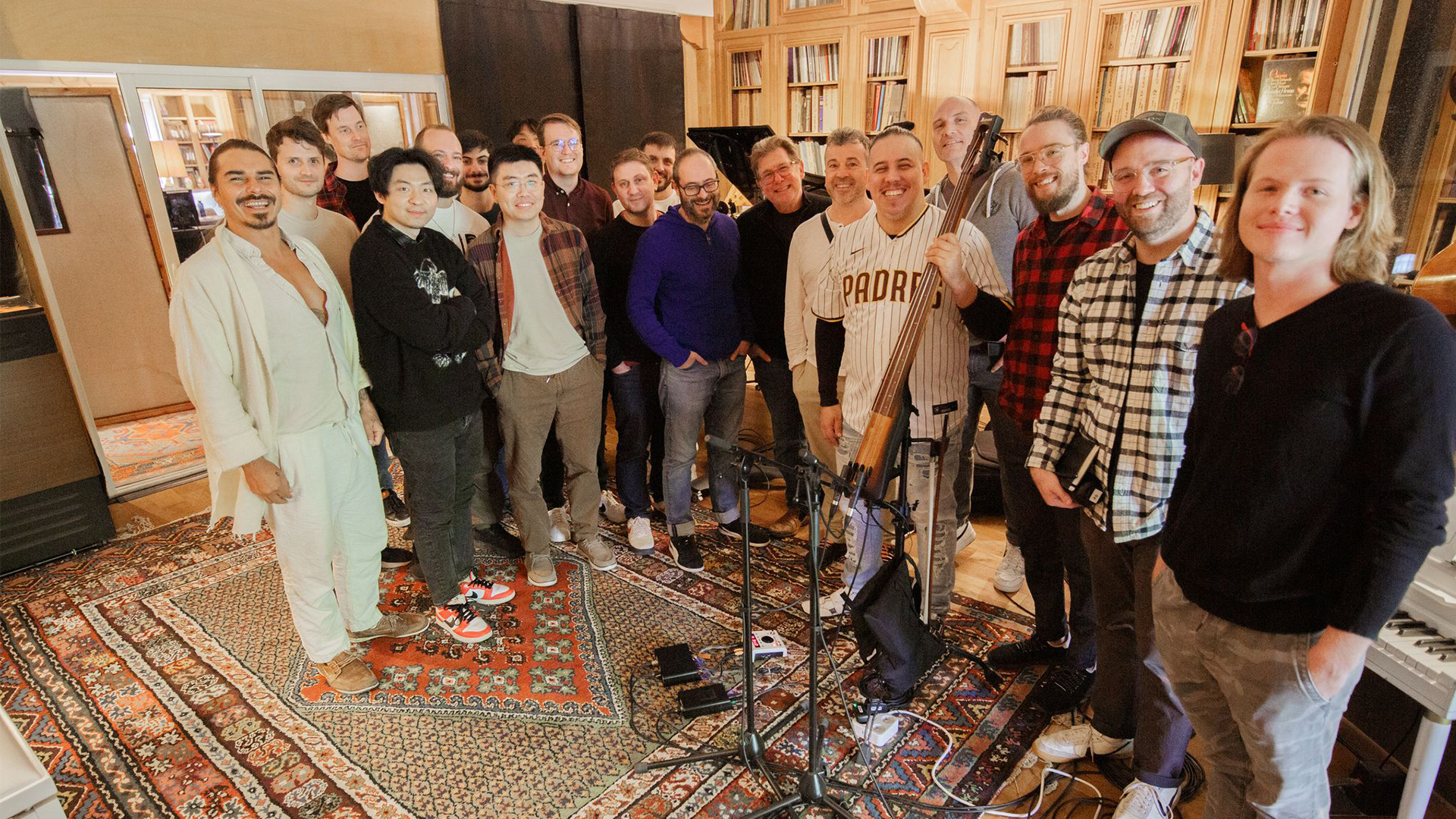
Juan Garcia-Herreros, The Snow Owl with the bass setup he used to record Hans Zimmer’s score for Dune 2. Photo: Romy Bella Levinsohn
During our time at Mix With The Masters, many choice phrases and pearls of wisdom from Alan caught the attention of one of the participants Erik Reichers, who had the foresight to jot them down and share with the group during our last family dinner of the week together. “F**k right or wrong” was a mantra that was repeated almost daily whenever a participant would inquire whether something they had learned at home was the correct way, or not.
Personally, I will always remember Alan’s disclaimer at the beginning of day one, just after he took his seat in front of the group. “I know nothing” Meyerson exclaimed emphatically. Of course, it’s not entirely true, but the sentiment was an important first lesson for an industry that can fill even the most experienced mixers and composers with an acute sense of imposter syndrome.
“Working at the speed of thought” was something I witnessed first hand watching Alan mix a grooving track brought in by composer and sound designer Ben Jacquire. You can always tell when a mixer is in the zone when they are adding new plug-ins to instruments without even bothering to press stop. Seeing Alan work at the speed of thought was one of the most inspiring moments of the week.
To sum up both my Mix with the Masters plug-in roundup, as well as my time in France, I leave you with these final words of wisdom from Alan: “Chaos with clarity is magic”.
Zach McNees has been a sound engineer, editor, and mixer for 22 years. Since 2011, Zach has primarily worked in audio post-production for film, television, and podcasts. His work spans both documentary and narrative projects as a dialogue editor, re-recording mixer, and score mixer.
Get in touch with Zach via http://www.zachmcnees.com
Please note: When you buy products through links on this page, we may earn an affiliate commission.







